Grays World Travels 2017-2018
It is hard to believe we have already traveled through these beautiful places, and I had to go analog (gasp) for a while due to inconsistent Wifi opportunities. However, I promise I took very good notes for our stint in Africa...
For our time in Africa, December 1-25, we traveled with a tour company called Drifters in a large overland safari truck with five Europeans and our excellent guide from Zimbabwe, Tony. Tony was also our driver and our chef and the majority of the nights we spent in tents which we assembled, sleeping on cots. We slept the other nights in lodges when we were in cities. There was no air conditioning in the truck, or the lodges, or really anywhere, and some days were just hot. Africa Hot. We usually arose at 5:30 AM to take advantage of the coolest part of the day for a walk or another activity, and by the end of the day we were all nearly puddles, but happy, fulfilled puddles.
Our tour began in Cape Town, South Africa, a city which pleasantly surprised me with its gorgeous white sand beaches (apparently both Will Smith and Tom Cruise have vacation homes in the ritzy section of Cape Town) and diversity of restaurants. One of the first things we learned about Cape Town, however, was they were suffering a water shortage and someone in the airport even joked, “No one showers anymore. Just do that when you get home.” We were in an apartment with an excellent view of Table Mountain the first night, overlooking the bay and Robben Island, the place where Nelson
sarahdimickgray
19 chapters
It's not a holiday, it's an adventure
South Africa, Namibia, Botswana, Zimbabwe
It is hard to believe we have already traveled through these beautiful places, and I had to go analog (gasp) for a while due to inconsistent Wifi opportunities. However, I promise I took very good notes for our stint in Africa...
For our time in Africa, December 1-25, we traveled with a tour company called Drifters in a large overland safari truck with five Europeans and our excellent guide from Zimbabwe, Tony. Tony was also our driver and our chef and the majority of the nights we spent in tents which we assembled, sleeping on cots. We slept the other nights in lodges when we were in cities. There was no air conditioning in the truck, or the lodges, or really anywhere, and some days were just hot. Africa Hot. We usually arose at 5:30 AM to take advantage of the coolest part of the day for a walk or another activity, and by the end of the day we were all nearly puddles, but happy, fulfilled puddles.
Our tour began in Cape Town, South Africa, a city which pleasantly surprised me with its gorgeous white sand beaches (apparently both Will Smith and Tom Cruise have vacation homes in the ritzy section of Cape Town) and diversity of restaurants. One of the first things we learned about Cape Town, however, was they were suffering a water shortage and someone in the airport even joked, “No one showers anymore. Just do that when you get home.” We were in an apartment with an excellent view of Table Mountain the first night, overlooking the bay and Robben Island, the place where Nelson

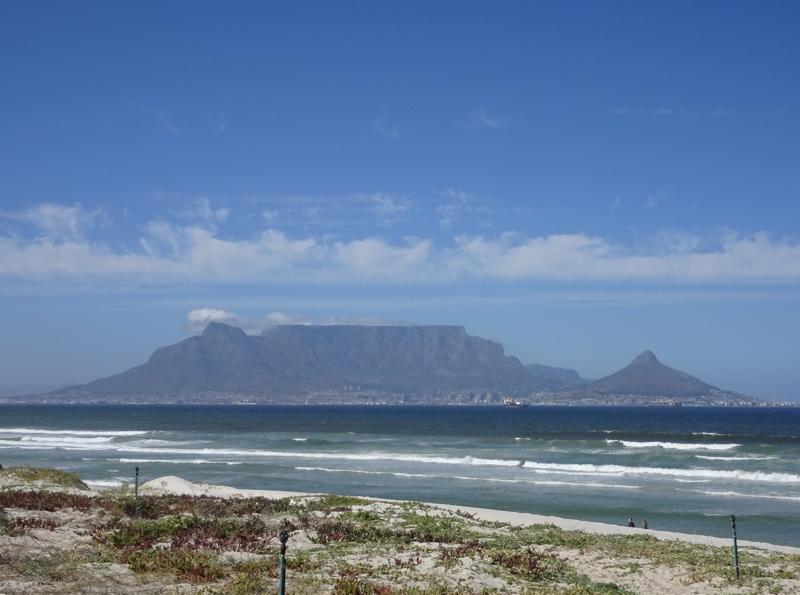
Mandela was imprisoned for 17 years. The next day we met up with the rest of the tour group and together we hiked up the path on Table Mountain, with lots of unfamiliar wildflowers along the way. We took a cable car back down.
The next day (December 3rd) we tested out the safari truck with a trip down to Cape of Good Hope. We stopped at Hout Bay to do a little souvenir hunting (small stuff, we had to stick to small stuff!) and continued on to the National Park. We did some walking around, saw an eland, and wished we could have had time to swim in the water. We continued on to Simon's Town and saw penguins in the bay, and wrapped up our day at an area winery with a wine tasting event.
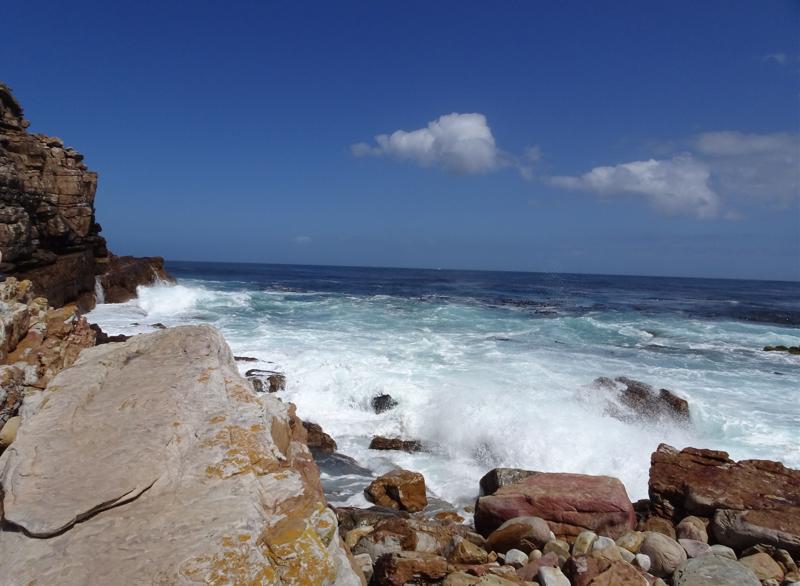
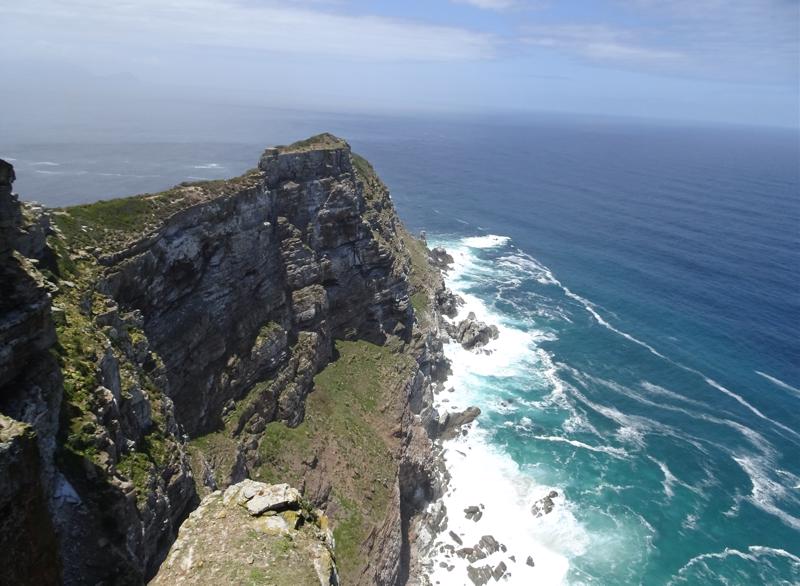
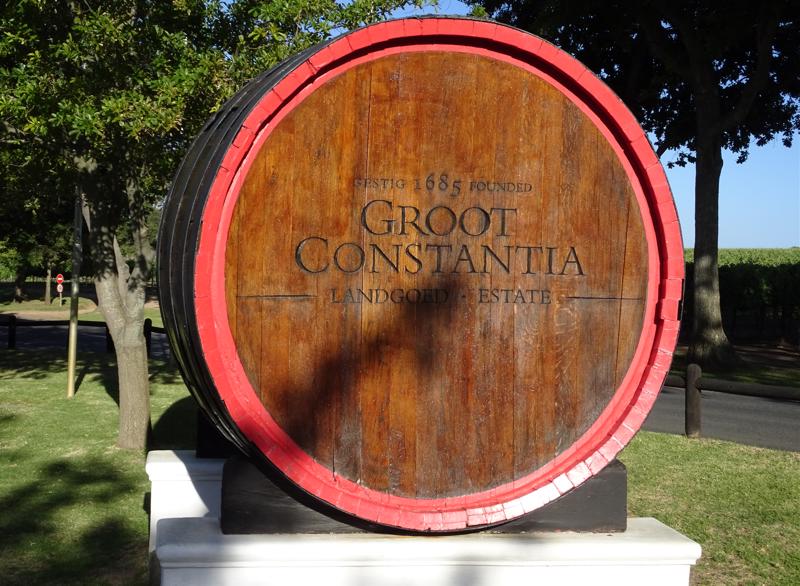
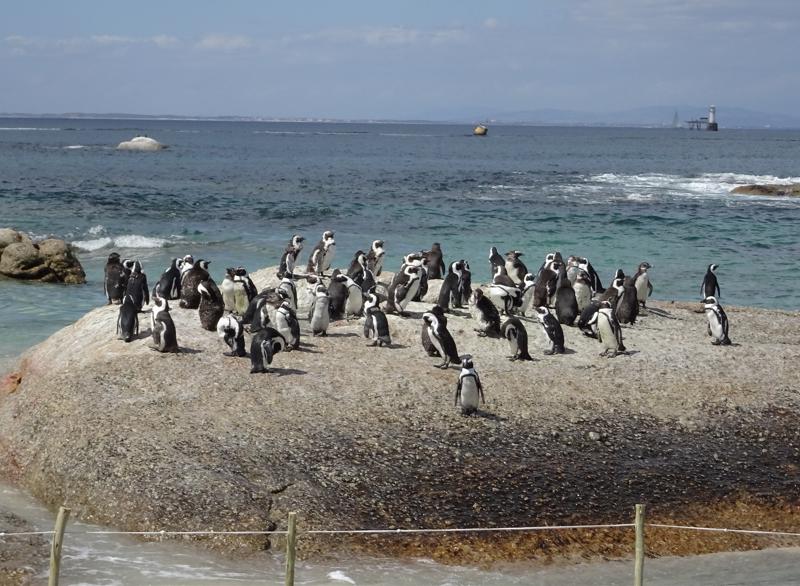

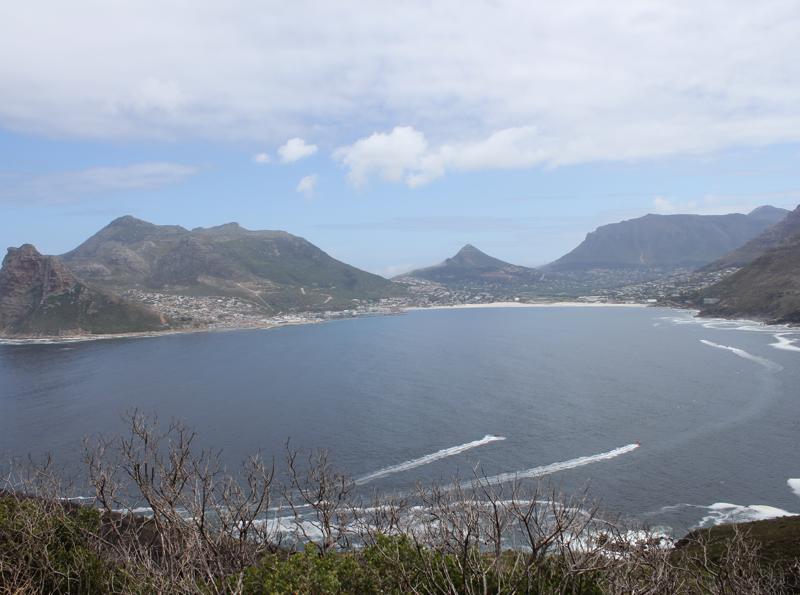
The next morning our journey began in earnest with the drive up the western area of South Africa, heading towards Namibia (population 3 million). The terrain in this part of the world is vast stretches of desert and pretty toasty—until we stopped on the southern Atlantic coast overnight, then it was quite chilly. We reached the Namibian border the next day and dealt with the formalities of border crossing in midday sun.
We stopped at a resort on the Orange River just over the border and prepared for our two-day canoe trip down the Orange River, probably the only river in southern Africa that does not have crocodiles or poisonous snakes in it. The bird watching was phenomenal with grey herons, Goliath herons, African dada birds, and cormorants swooping by us. That night we slept out on a riverbank, no tents, just sleeping bags, and watched the moon rise into a brilliantly starlit sky. In the early morning we saw baboons on the other river bank, catching breakfast with a quick hand darting to grab a silvery fish.
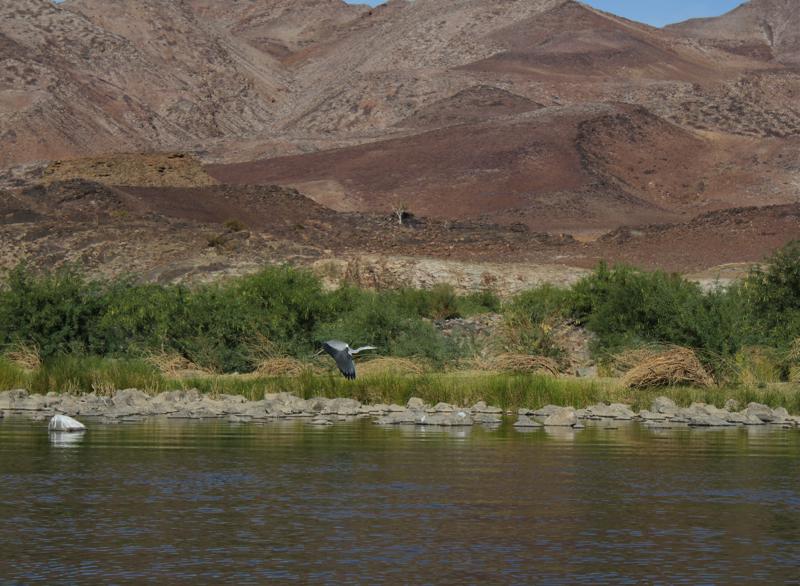
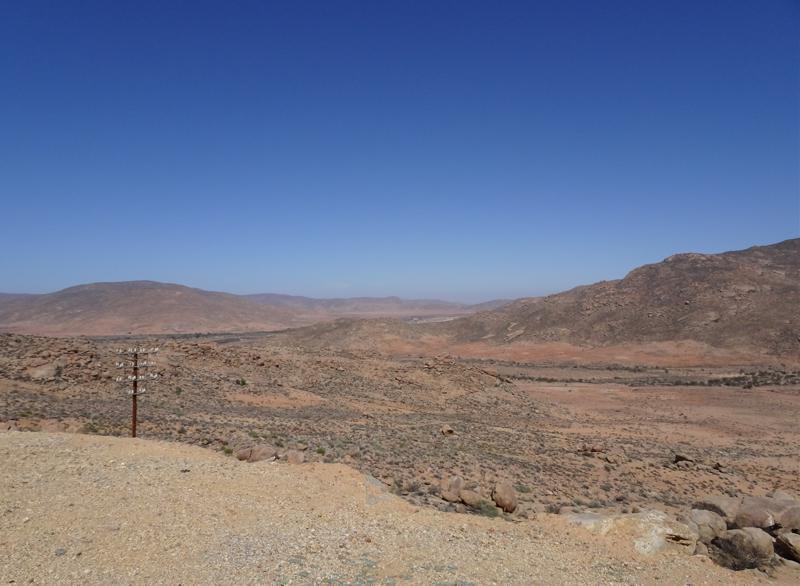
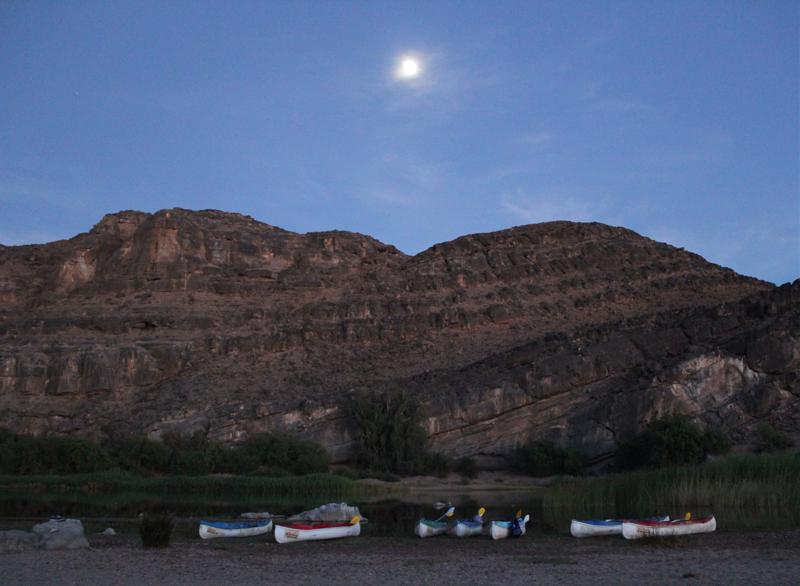
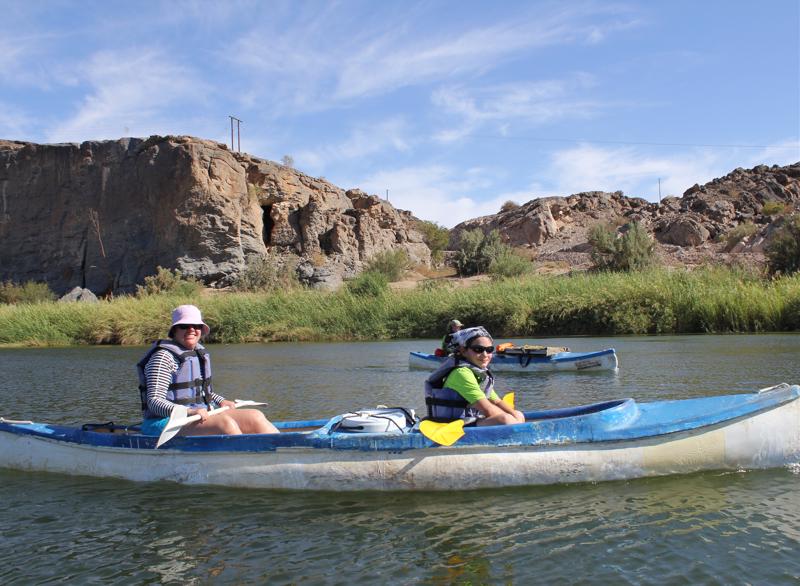
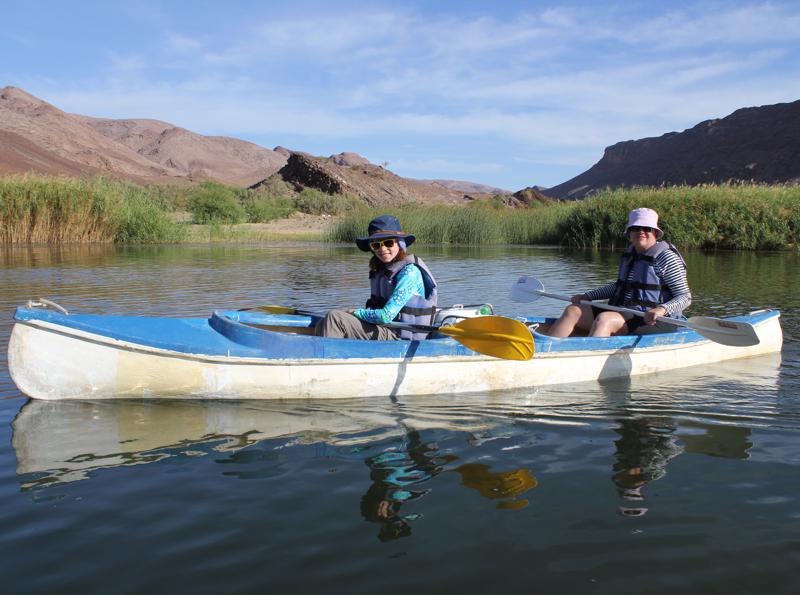
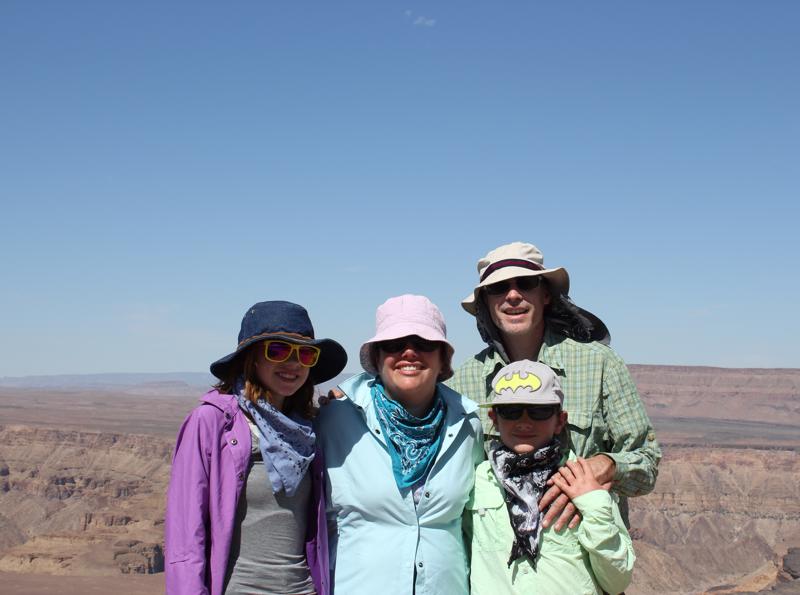
We began paddling by 6:30 AM…our trip was a total of 30 km and we wanted to finish before it got too hot. By 3 PM, at 42 C (108 F) all the tourists from northern climates were wiped out and our guides were not far behind. That evening we all required a lot of rehydration therapy to start talking in complete sentences again.
Our travels continued the next morning (December 7th) into the Namib desert. We stopped at the Fish River Canyon, second in size only to the Grand Canyon. We drove to the Greenfire/Drifters Desert Camp, surrounded by beautiful rock formations. We saw a few scorpions here but no snakes (for the record, I saw no snakes during our whole Africa trip. Yeay). We saw oryx and springbok here from the antelope family, and lots of nests from weaver birds. We learned the axiom for proper nature walks through leopard territory of “Walk, don’t run. Food runs”. One unique architectural feature of this camp, as of many camping facilities in Namibia, is there was no roof on the bathroom. There were bathrooms, with walls. Creative ones. And
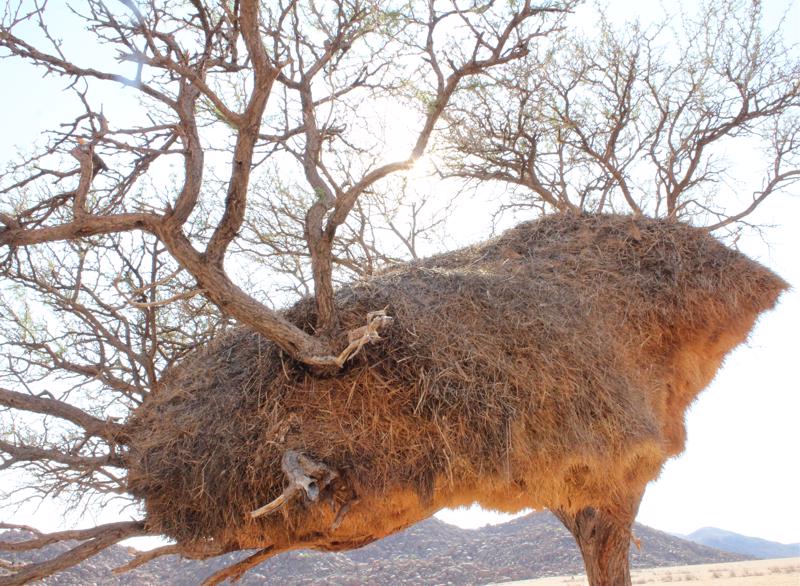
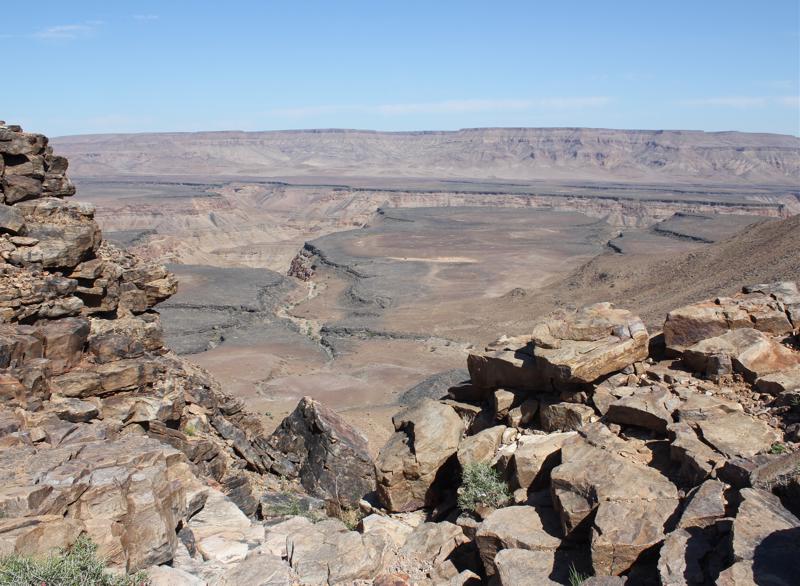
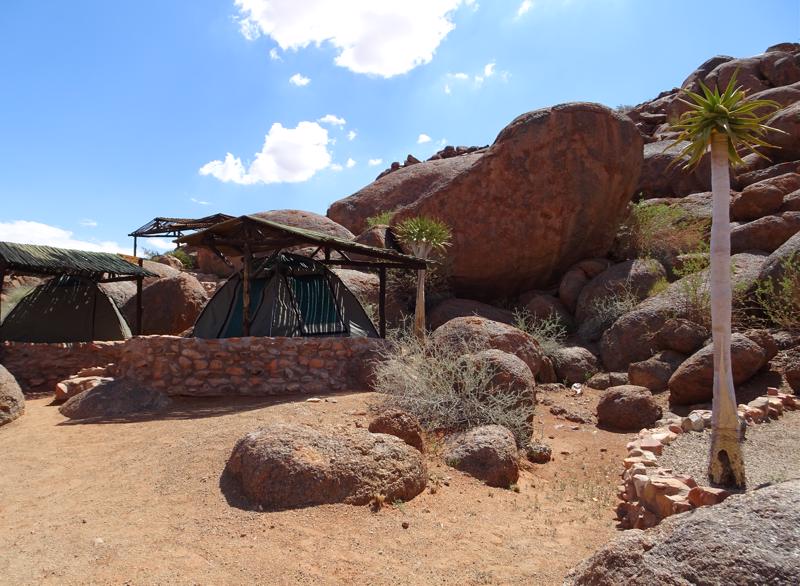
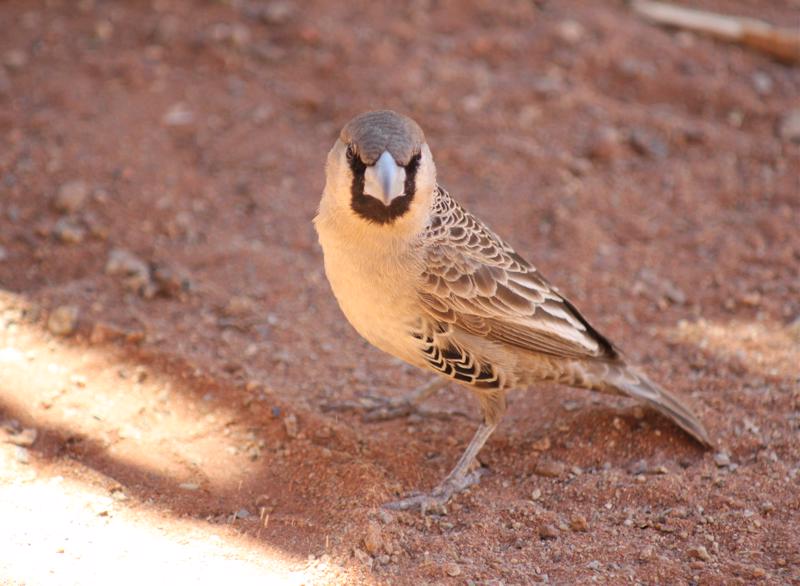
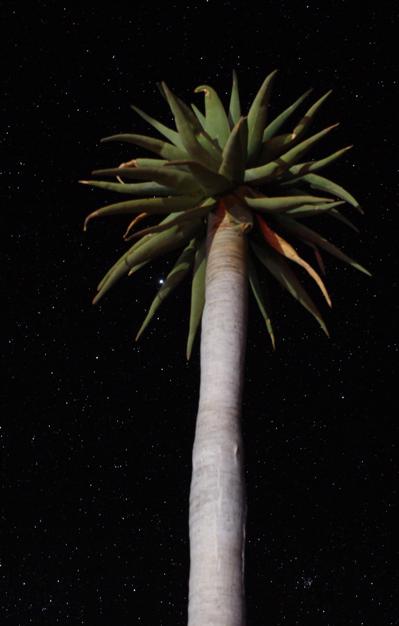


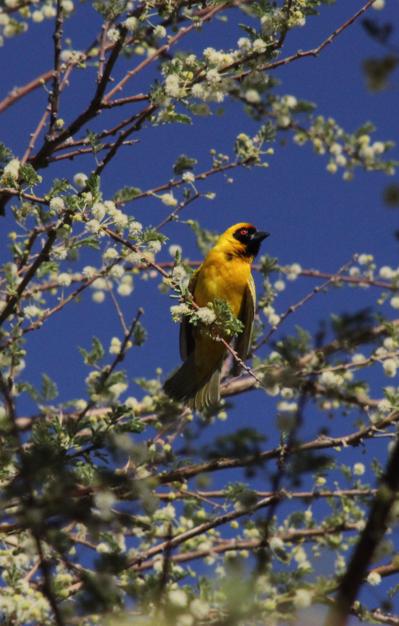
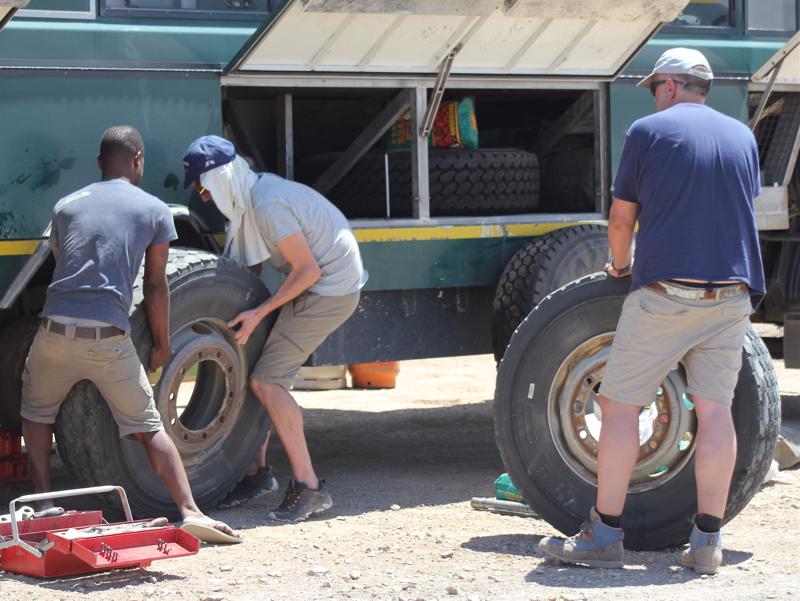
showers. Just no roof. No worries about rain or anything else falling from the sky. Rather disorienting. After the Desert Camp, we woke even earlier the next day, 4:40 AM, and traveled to the sand dunes of Namibia in Sossusvlei National Park. We all climbed Dune 45, and then Scott and the kids climbed part of the largest sand dune in the park known as Big Daddy. I was past any illusions of grandeur and very hot (it was already over 42 C) so I opted to just hike out to the salt flats adjacent to the dune. The dead trees in the salt flats are over 400 years old. Our journey took us to Walvis Bay, along the Namibian Atlantic Coast, and we saw flamingoes before heading into Swakopmund, a town of about 25,000 residents. The German influence was evident in the architecture and the street signs, and it has been of great interest to me to think about the European settlers in this part of the world. The coast was much cooler than the Namibian desert interior, and we enjoyed seeing the giant crystals in the Crystal Museum and then four wheeling across the desert.

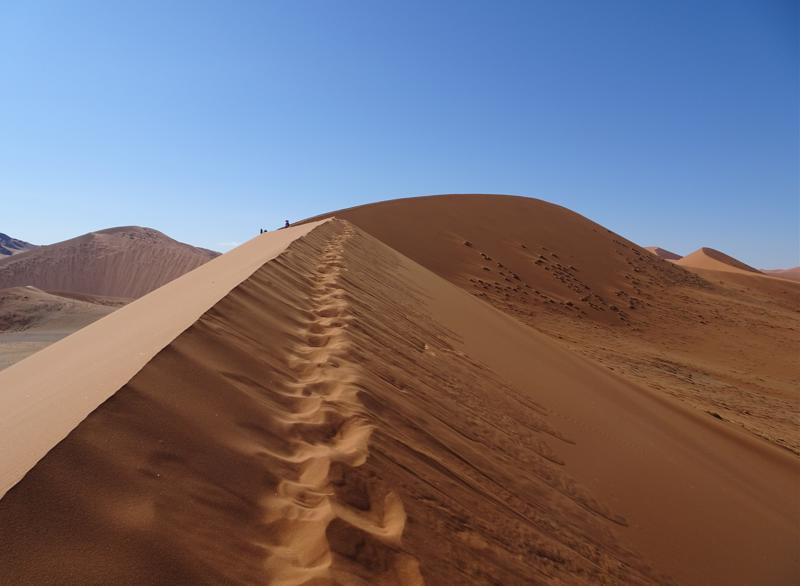
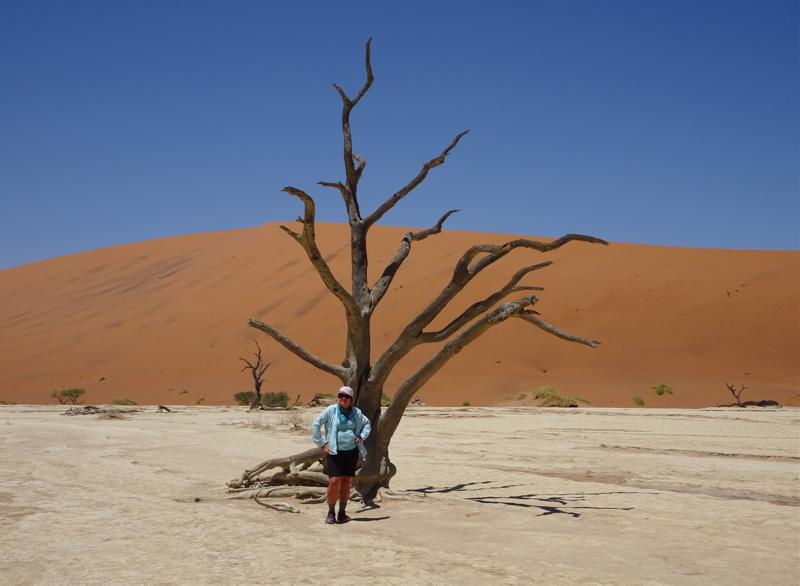
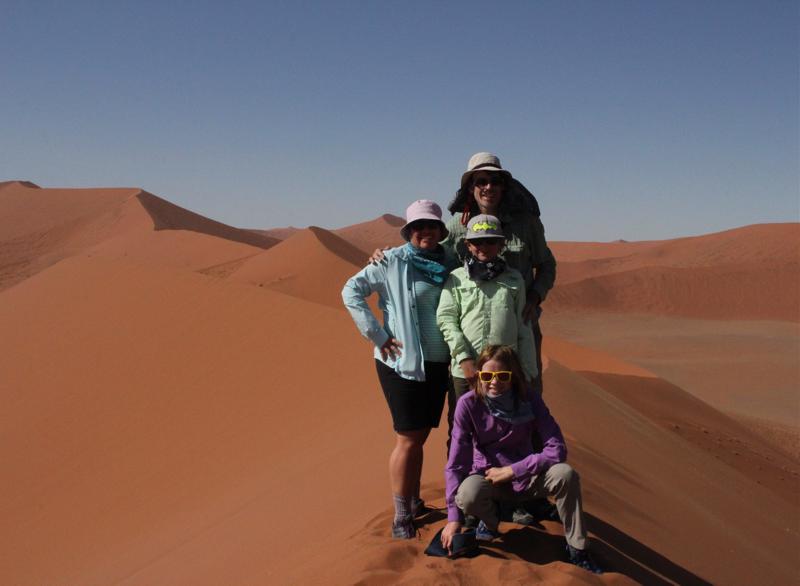
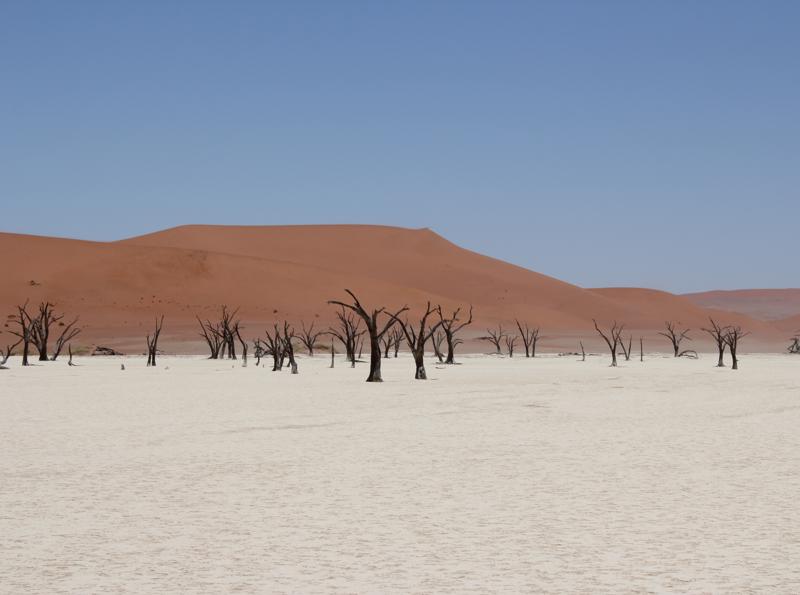
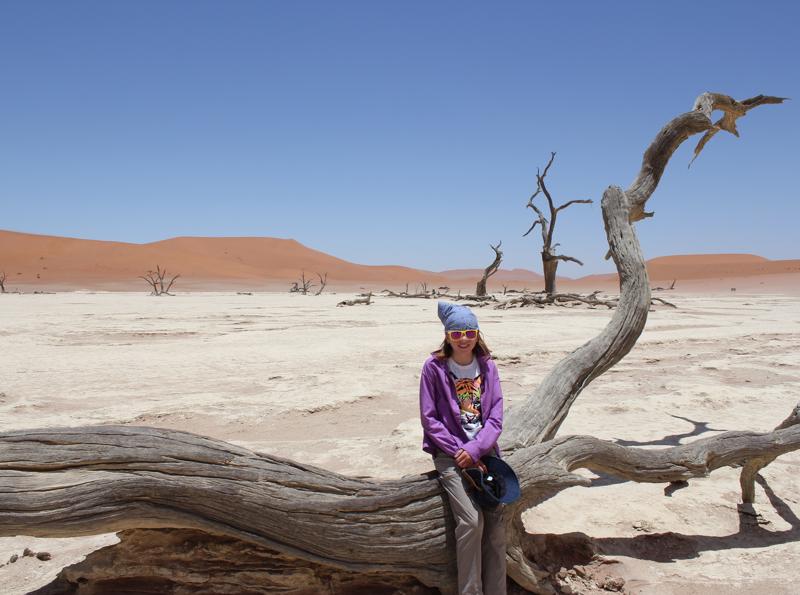
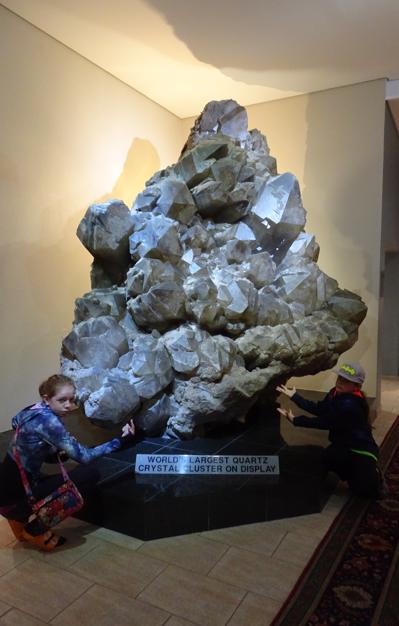
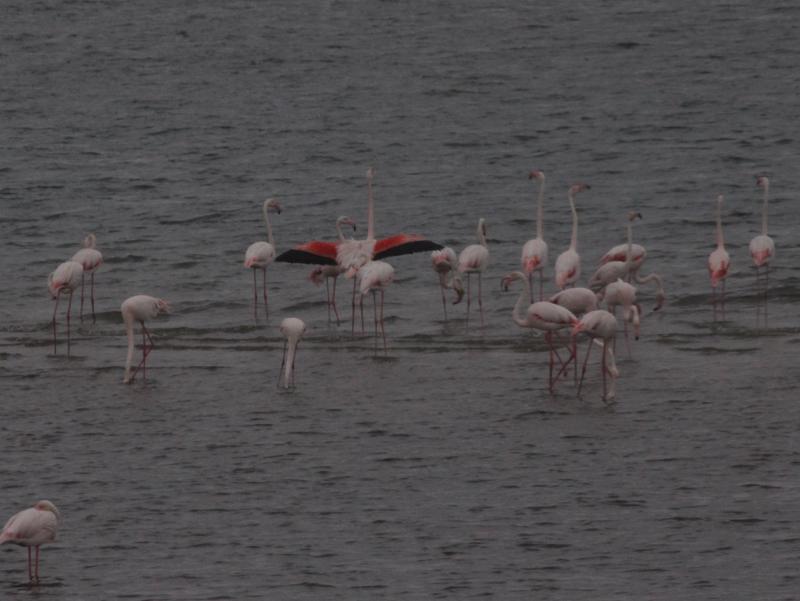
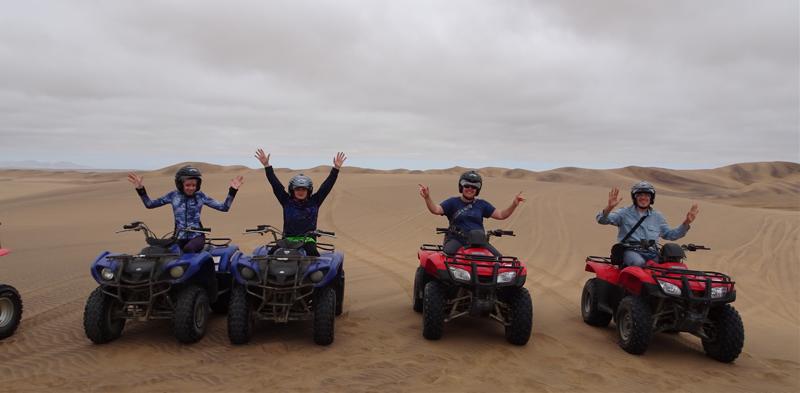
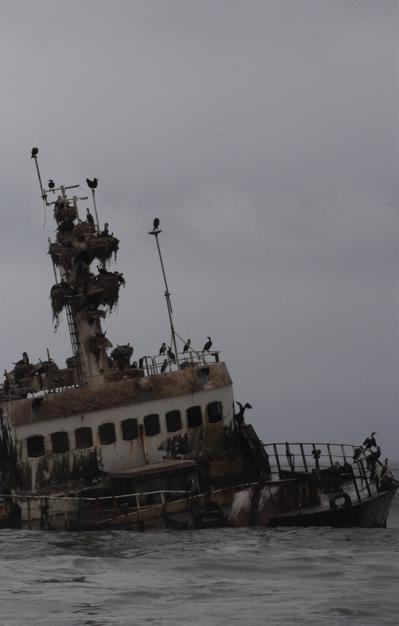
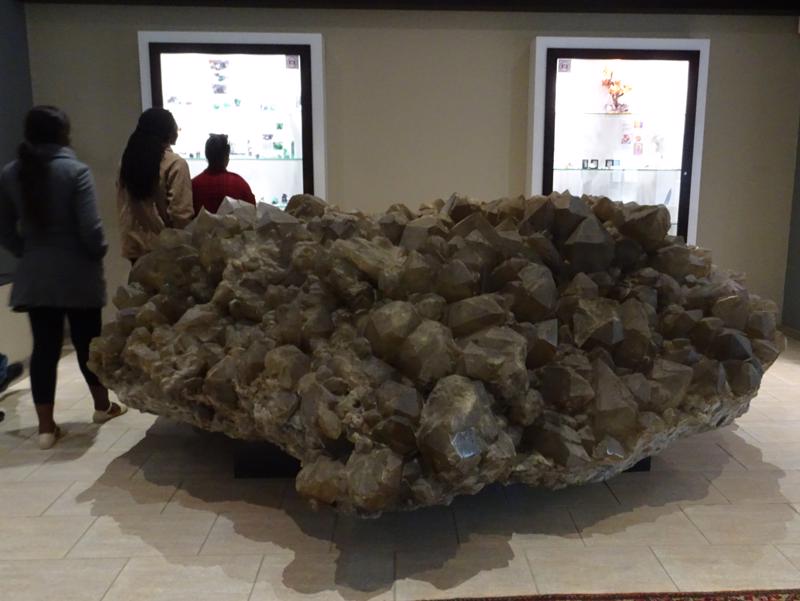
We left Swakopmund (December 12th) continued up the coast, known as the Skeleton Coast for the number of shipwrecks that occur here (apparently the waves can get up to 30 meters high) and stopped at a natural (huge) breeding seal colony. We saw a multitude of baby seals, some only hours old, and some who didn’t make it because the jackals were lurking at the corners of the colony. The road in this part of the world is made of salt, and it can get slippery in some areas when there is actually rain. We traveled to another part of the desert known as Spitzkoppe, with more beautiful rock formations.
The next morning we were headed to Etosha National Park, Africa’s first national park, for animal viewing. Along our way we stopped at the roadside stands of the Himba tribe, whose women choose to wear clothing from the waist down only, and the Herrara tribe, who felt the influence of European missionaries suggesting a different manner of dress for their women.
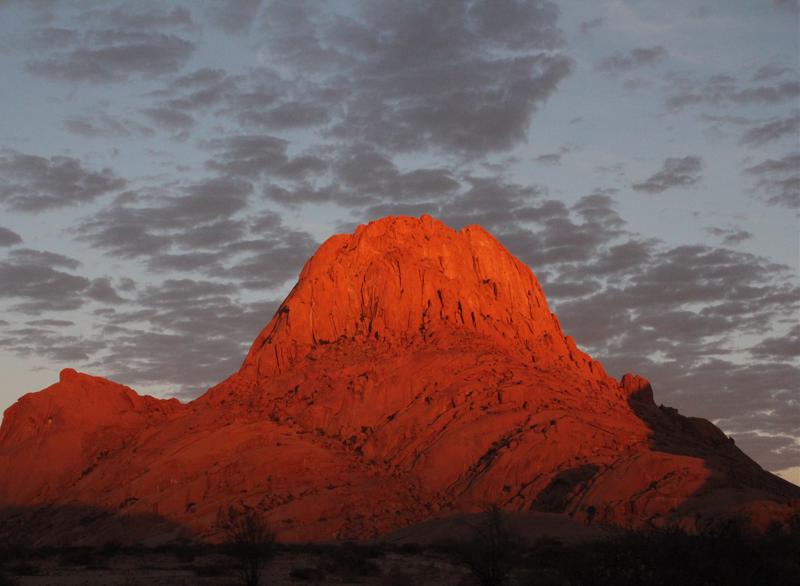
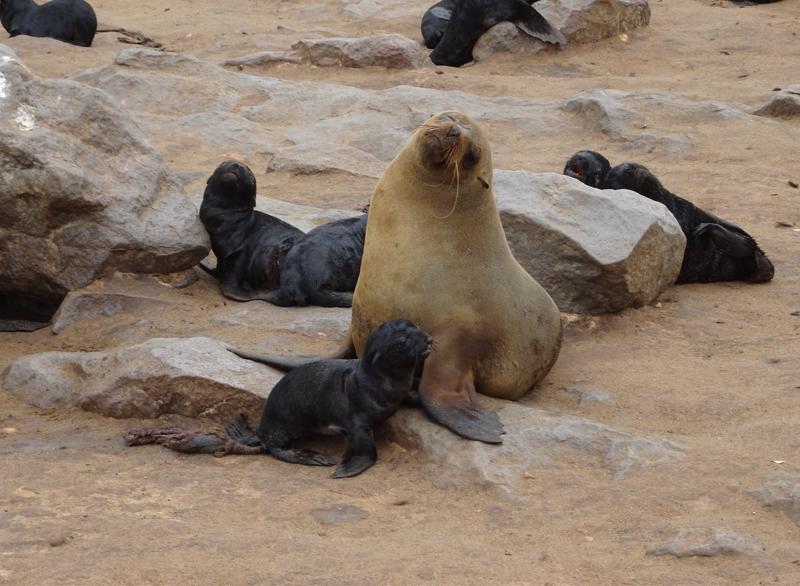
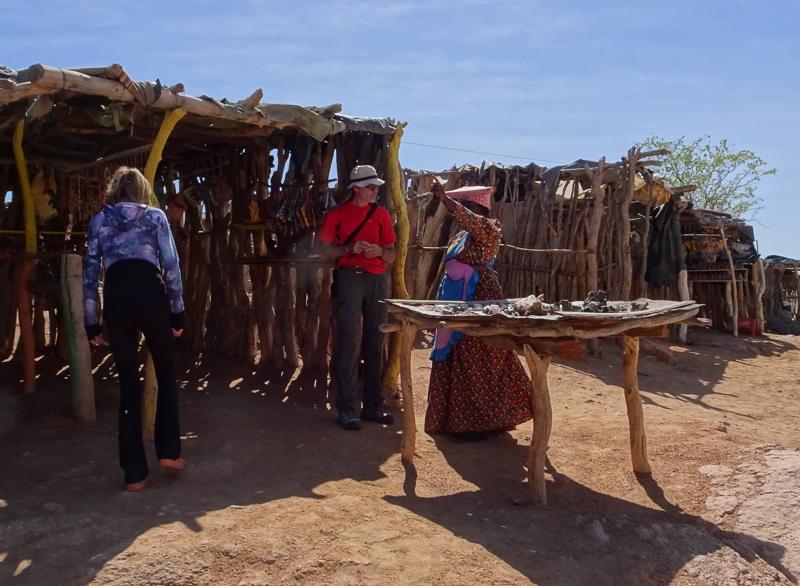
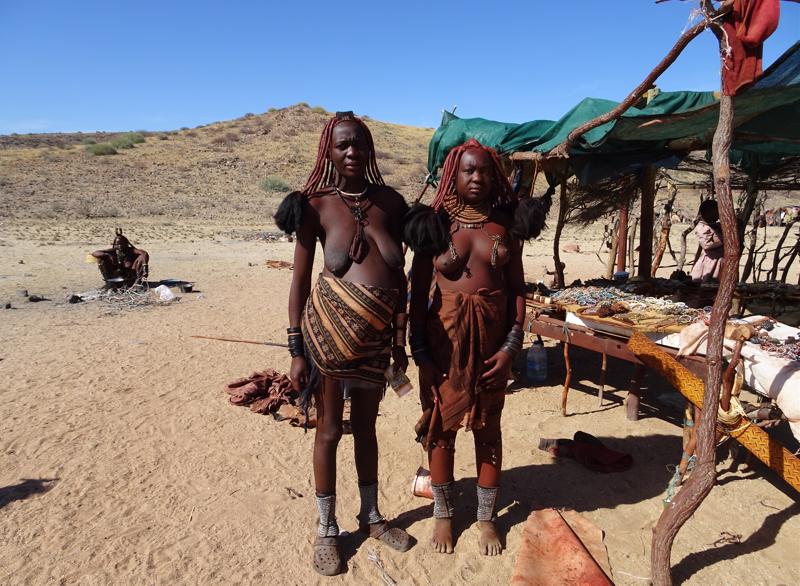
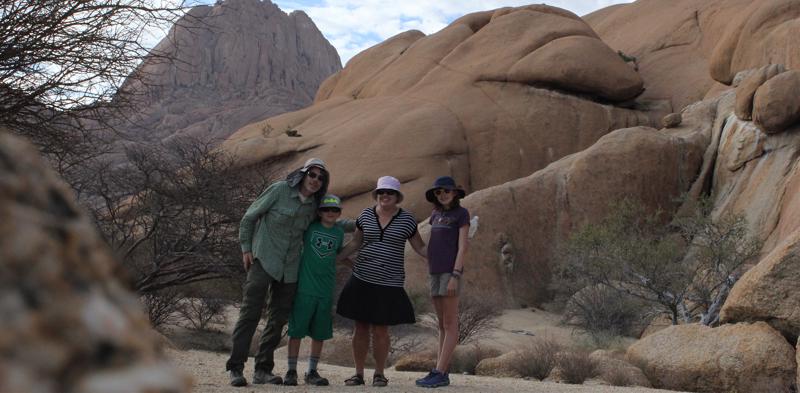
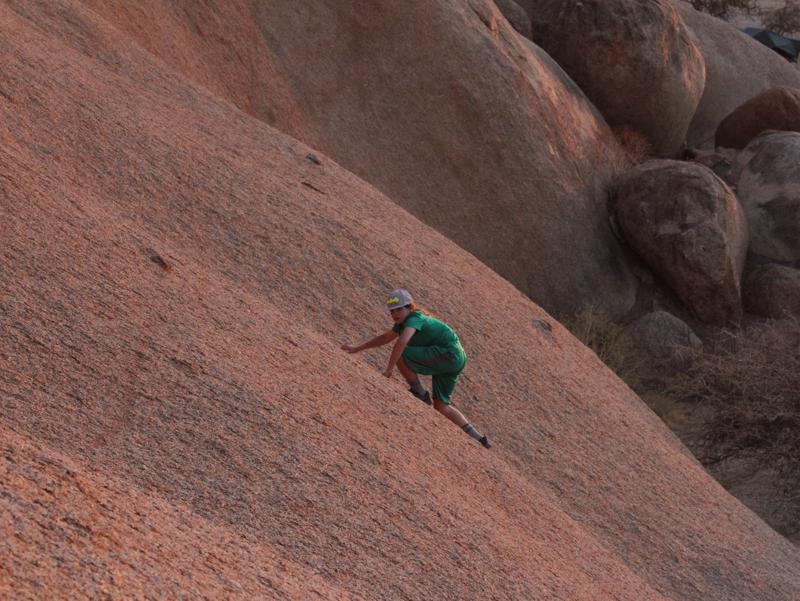
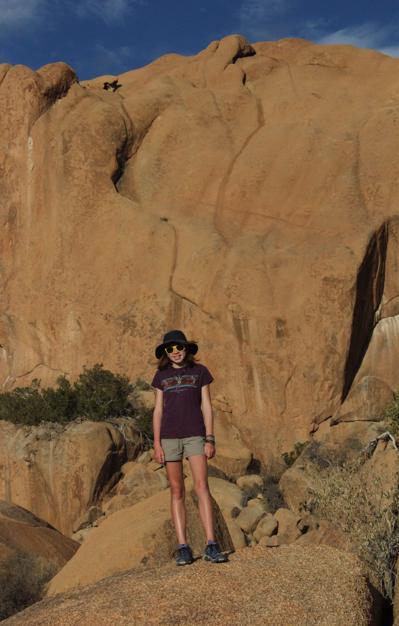
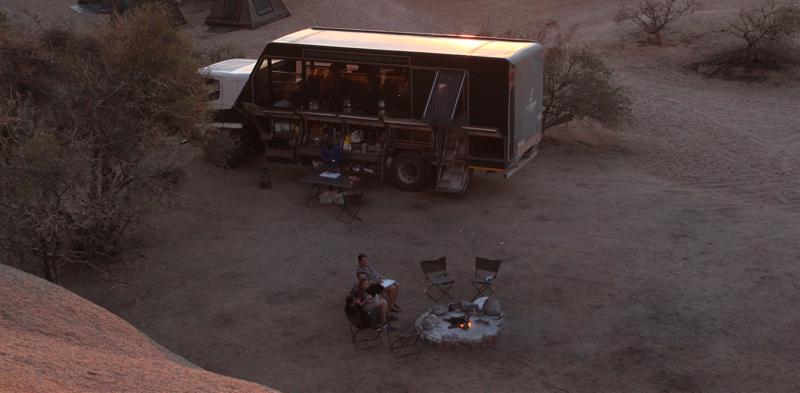
Once we were in Etosha, we went on several game drives and saw “dazzles” of zebras, “towers” of giraffes, elephants, a rhino, impala, kudu, hyenas, red hartebeest, wildebeest, kori bustard birds…but unfortunately no lion. Some people heard lions at night, when we were safely behind the locked walls of the camping/lodge compounds, but cats remained elusive for our trip. We got the opportunity to try springbok, kudu, and oryx for dinner. Fiona claimed to love it all, but the less expensive beef would do for me just fine. The heat continues to render me a blob of jelly between 2-5 PM; luckily no one required too much more of me than setting up my tent or chopping something for dinner.
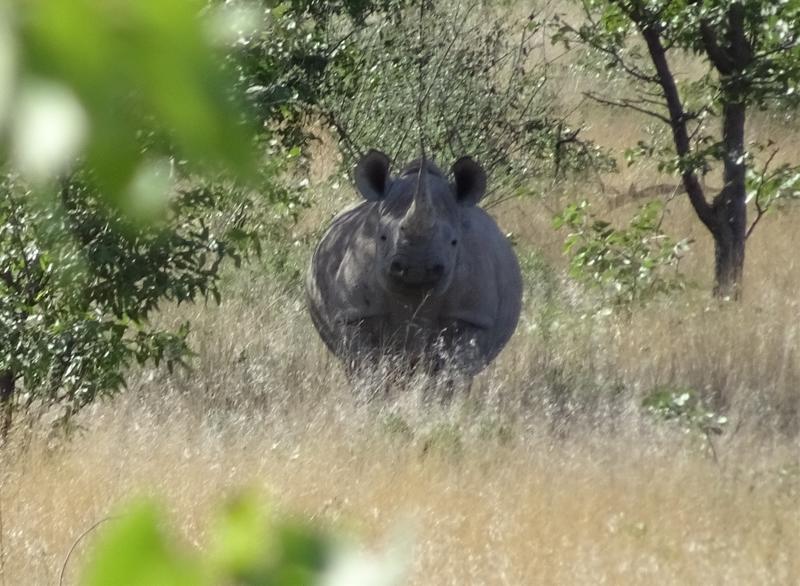
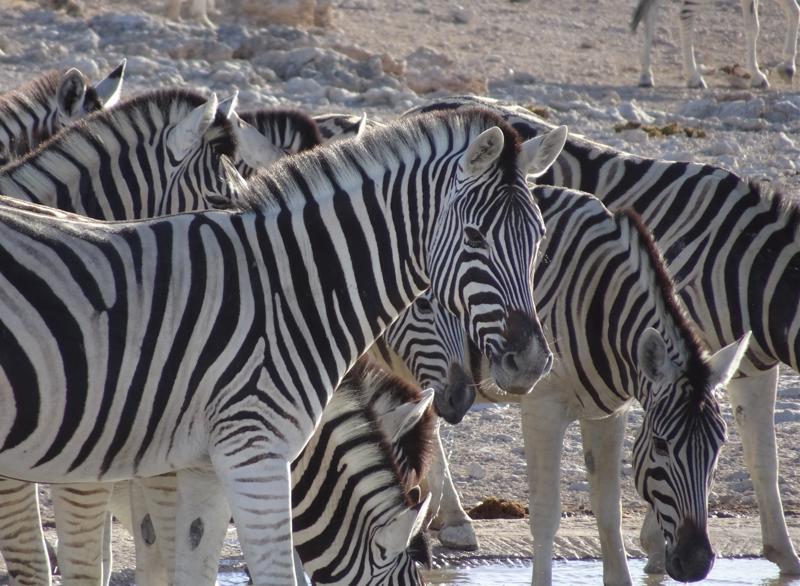
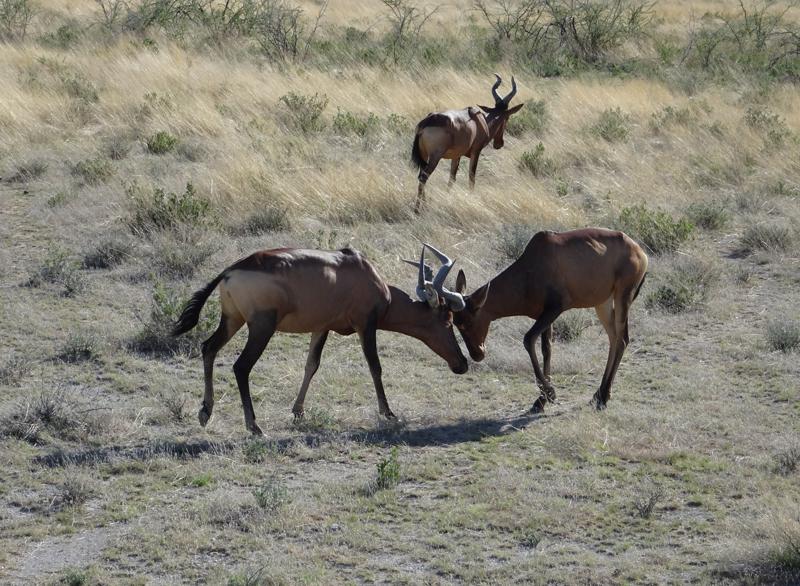
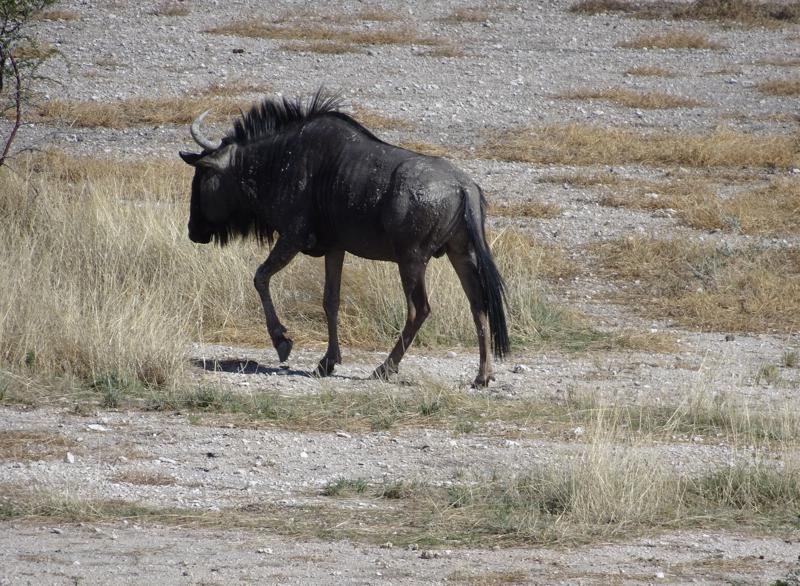
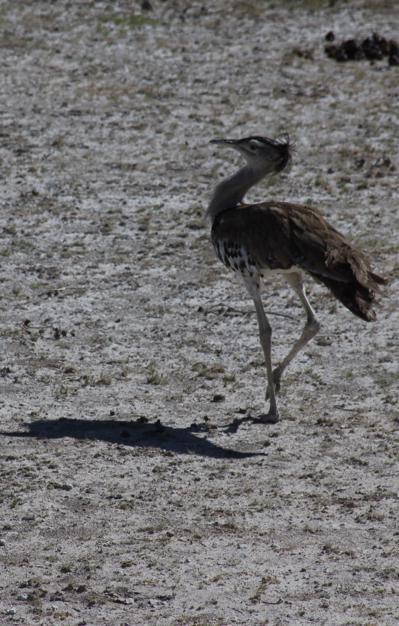
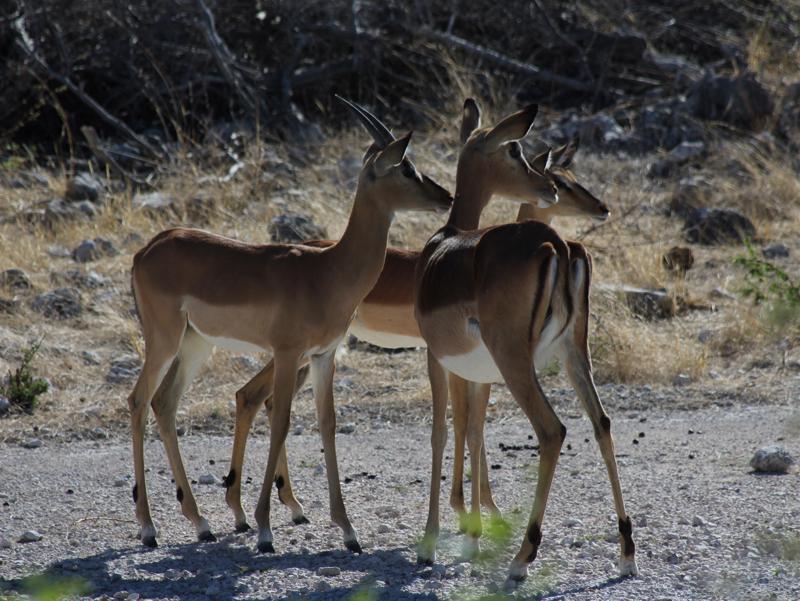
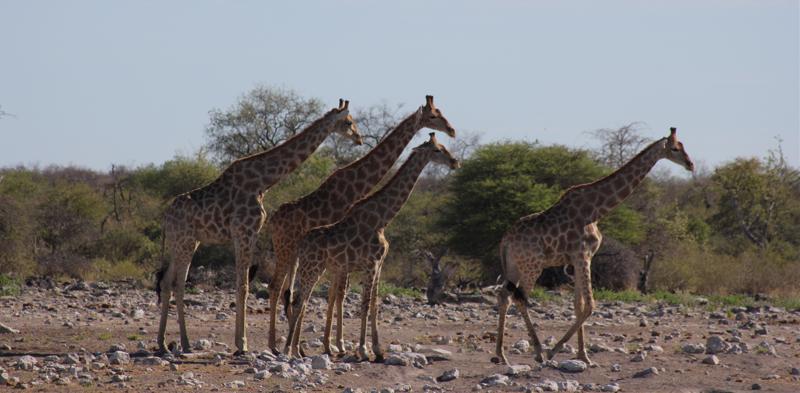
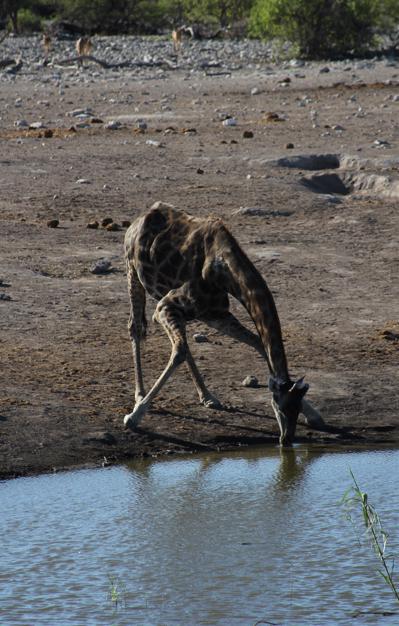
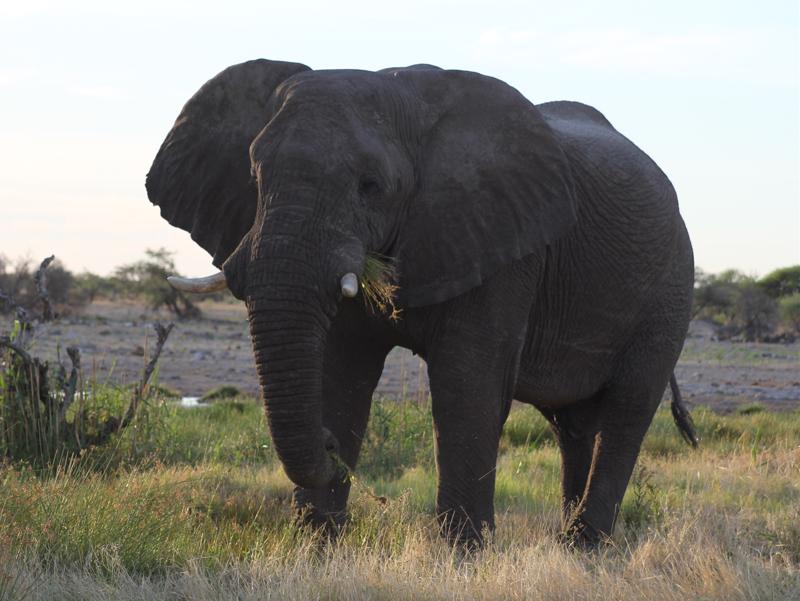
From Etosha we headed eastward towards the border with Botswana and slowly, slowly the terrain became more lush. We stopped at a camp along the Kavango River (Namibia), which forms the Okavango Delta in Botswana. The Kavango is home to hippos and crocodiles, and the camp we were at featured cage diving if you wanted. The camp was really creative and featured one of my favorite toilets on this trip, the Toilet of Eden. Fiona and I heard hippos munching grass outside our tent that night.
The next two days were probably the most remote of our entire trip. After crossing through the border into Botswana (population 2.5 million), we took a speedboat some 80 km (50 miles) into the Okavango Delta, to an island with a remote ecocamp. We saw crocs on the banks as we sped past papyrus groves and the occasional hippo gave us a huge smile. We spent the night in large preassembled tents on the island after receiving instructions on what to do if we came across an elephant, lion, hippo or other large wild
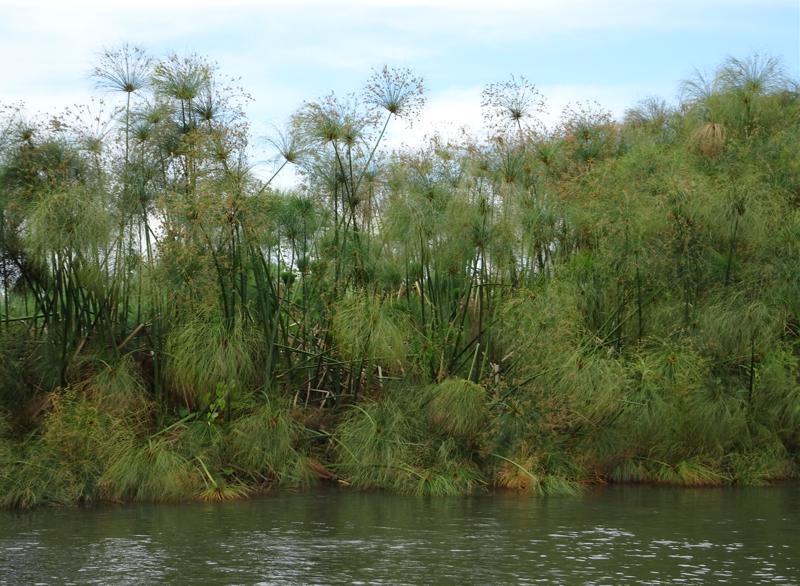
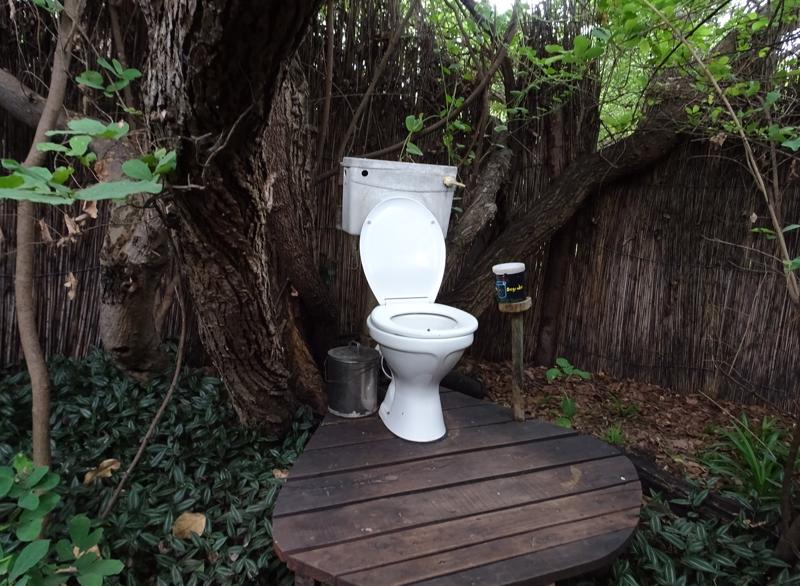
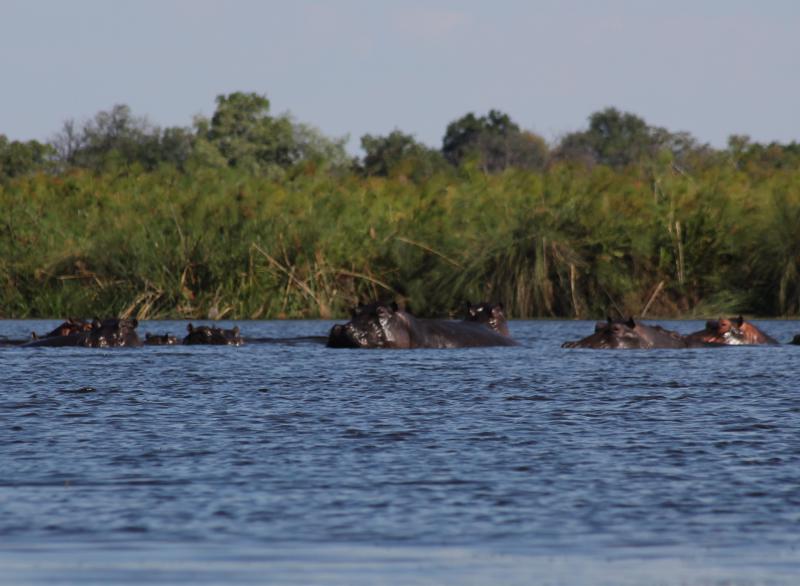
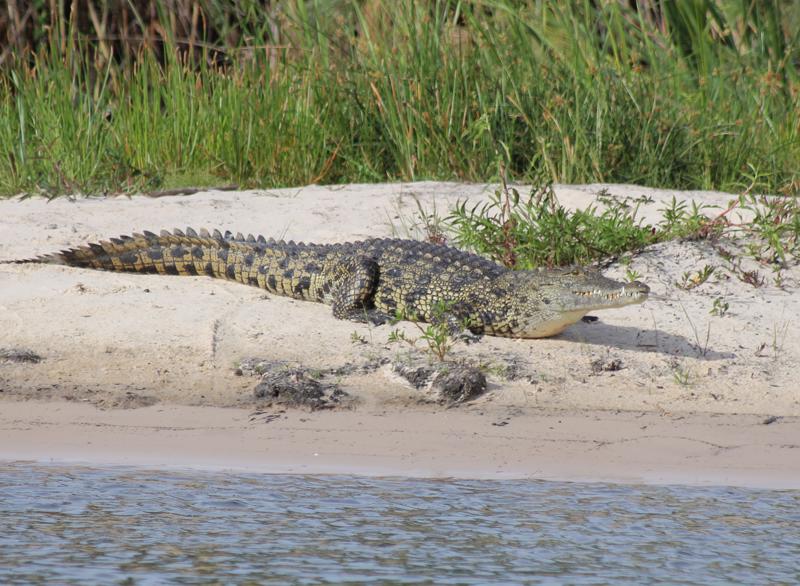
creature within the camp (going to the bathroom that night was a group effort among all five women in our tour). All the creatures decided to keep to themselves that night, just a few scorpions to make sure we were all paying attention, and we woke the next morning to a nature hike and a mokoro ride in the afternoon. During the nature walk we saw a water monitor lizard, a field full of antelope, baboons, and several warthogs passing by us at full speeds. In the afternoon we went on a mokoro, or traditional poled canoe, ride through some of the very narrow channels of the delta. We came upon a group of about 30 hippos in one lagoon, and on our way there we could hear one more grunting at the others. It came crashing through the delta at top speed in a channel parallel to our mokoro, surprising us all. Hippos can really move when they’ve a mind to it…
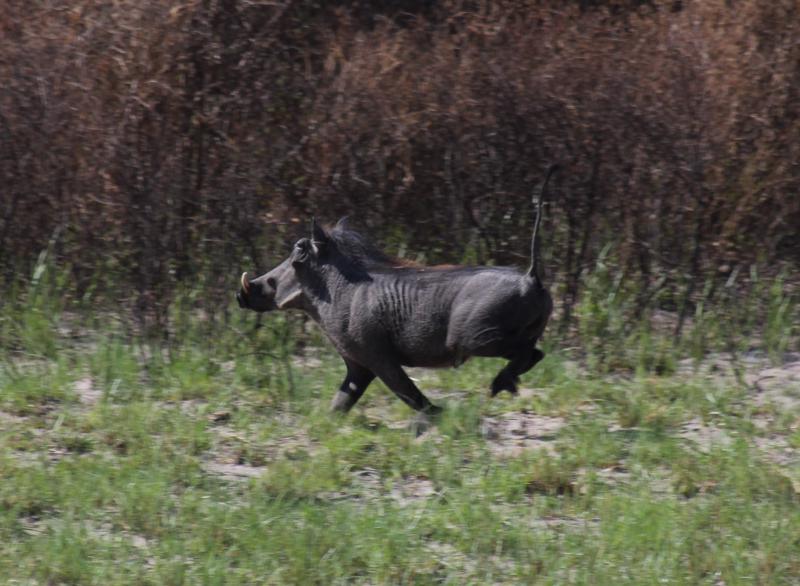

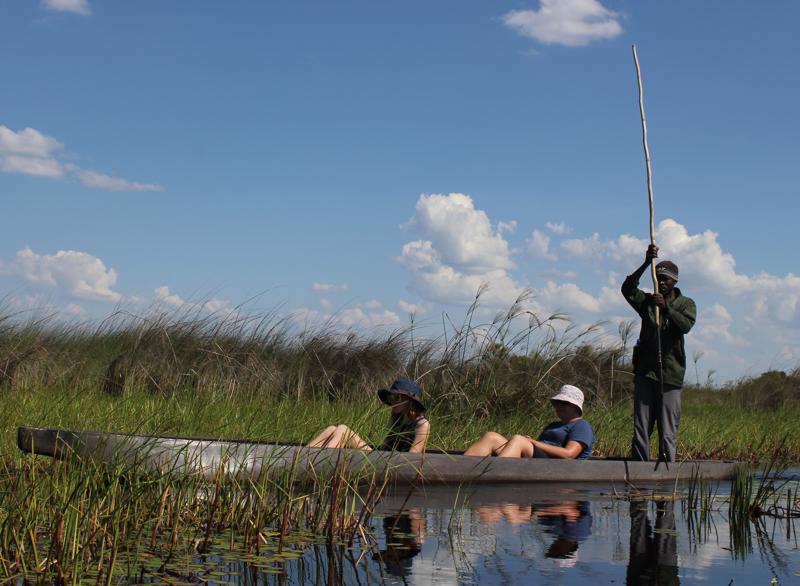


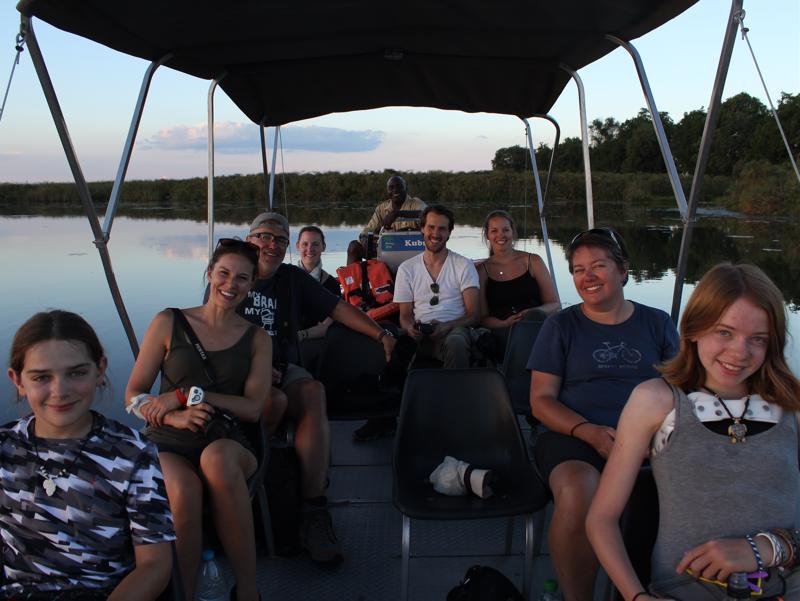
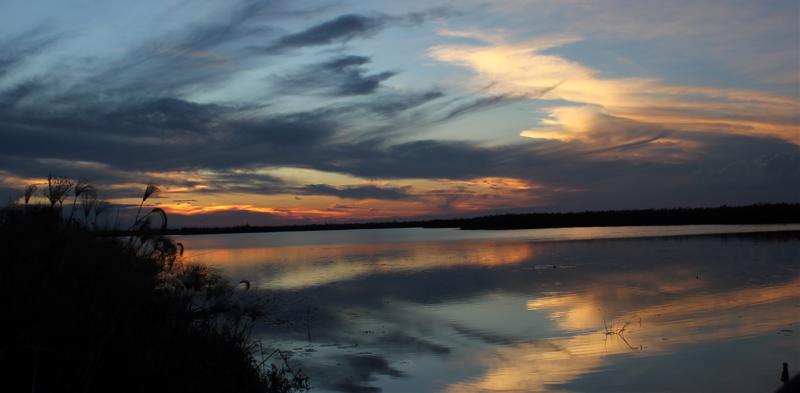
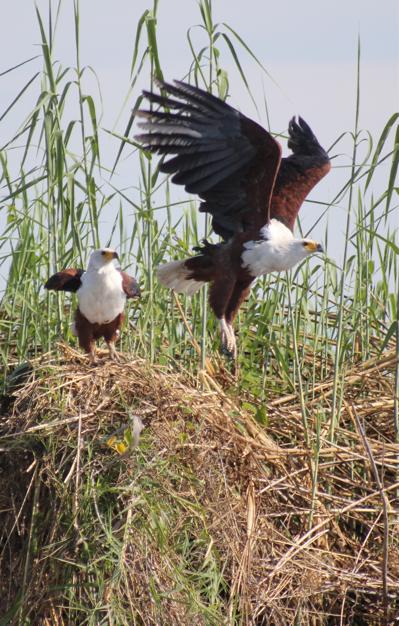
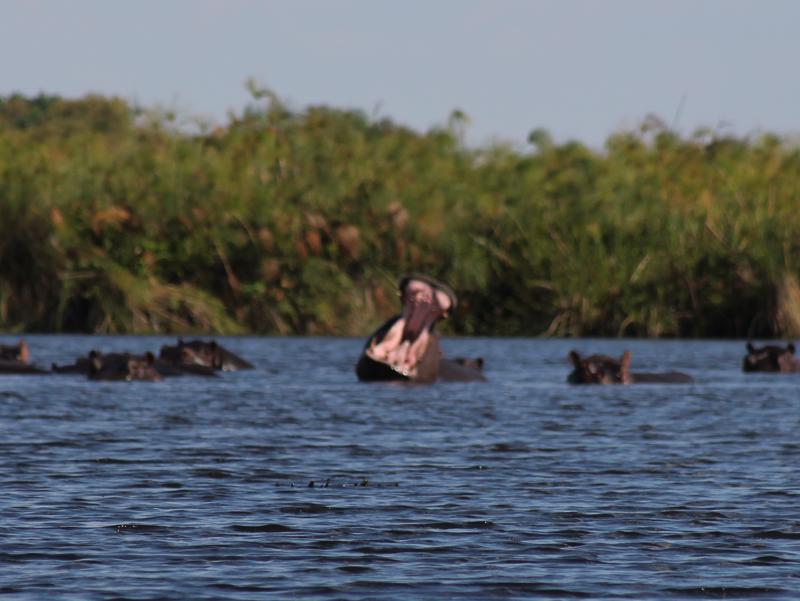
After returning out the Delta, we drove to Maun, Botswana and rode in a charter flight over the Delta. This was the very beginning of the wet season; the rains will peak in March and April so we could still see mostly land. We saw herds of elephants, zebras, and rhinos from above.
We spent that night (December 18th) in Maun, at a Drifters lodge with platform tents, along the Okavango River for the final time. In the morning we visited a modern-day African village that featured eager little kids greeting us, traditional termite mud houses as well as cinder block structures, a government building (village population, 500), an outdoor courthouse, a clinic (top concerns, malaria and HIV/AIDS), a school going through 7th grade, and a purified water system with a zip drive accounting system: people would bring a bucket, insert their zip drive into the pump, and retrieve the needed water. Price for water was about $0.10/5000 L.
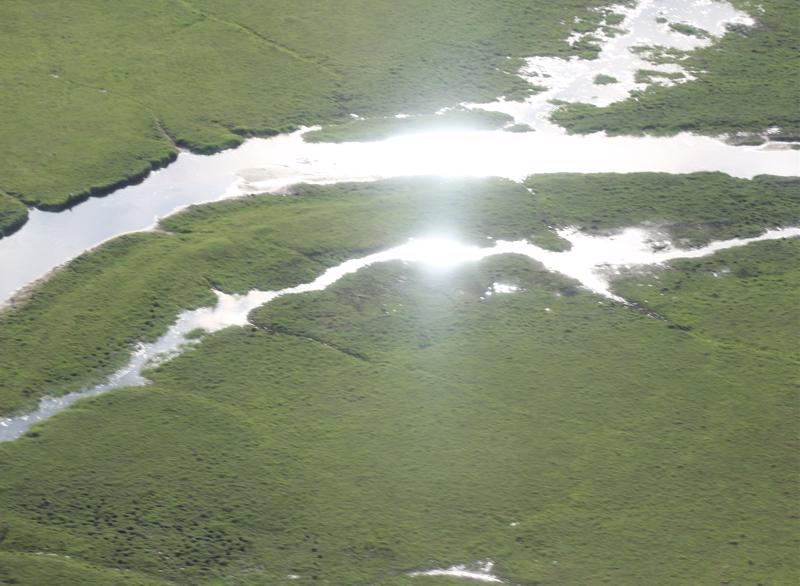
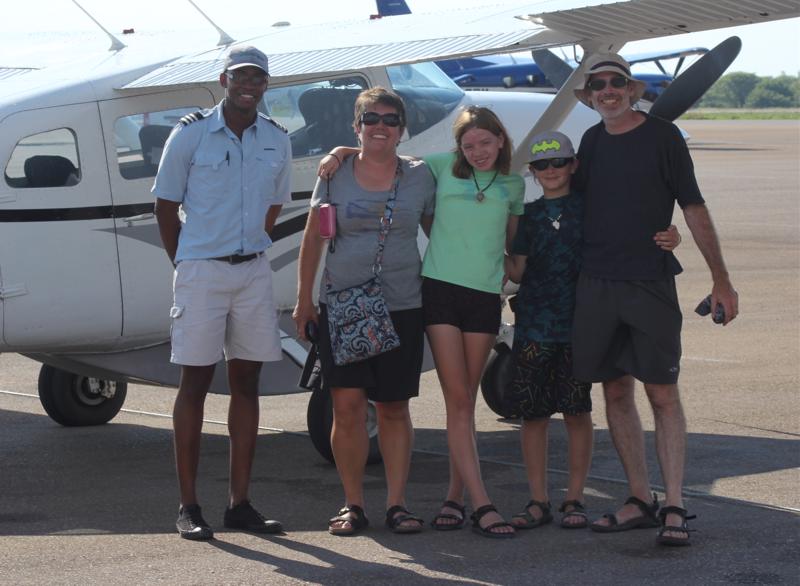
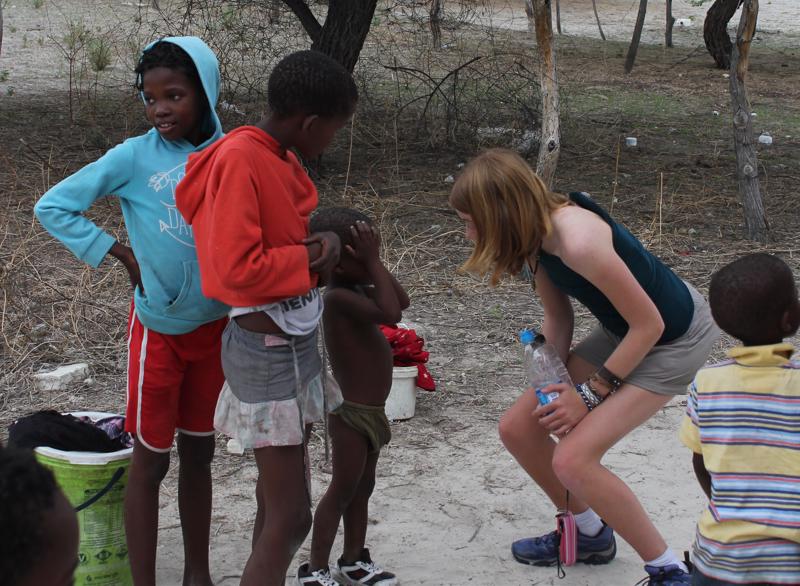
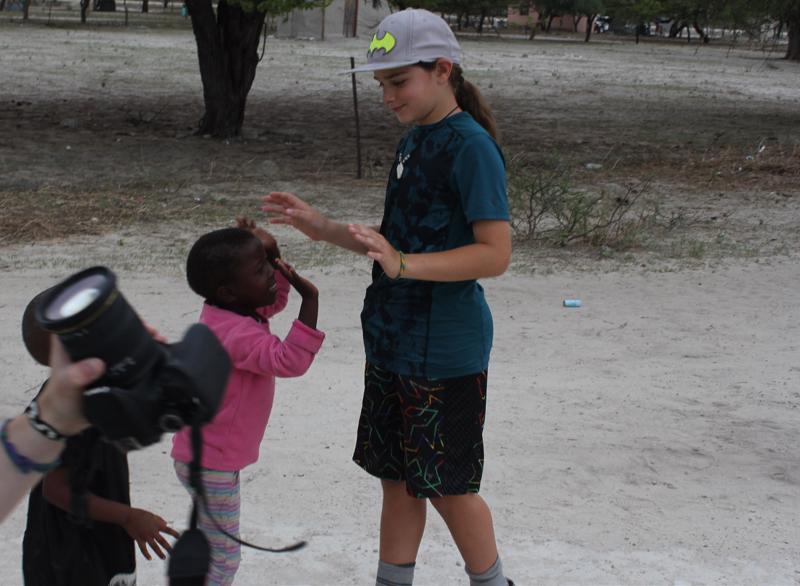
That night we headed out to the Mahedihadi Salt Pans, a truly desert-like environment, only one tree, where not a whole lot will grow.
The next morning we headed to the Chobe River for a river cruise. We saw crocs again, and hippos, but the true treat was the gathering of about 50 elephants at the waters’ edge to take a drink. The baby elephants were playing in the water, and we quickly found ones we nicknamed Fiona and Harley.
Our journey continued after the cruise with the border crossing into Zimbabwe. Along the way we saw miles and miles of trucks waiting their turns to get through the border: apparently it can take two days to get through the border sometimes. Fortunately a shorter time for us, and we crossed into the border to Victoria Falls.
We spent the next day in the Victoria Falls National Park. The Falls was Bucket List for Scott, and they were beautiful. We were actually able to see the Falls because it was just the beginning of the wet
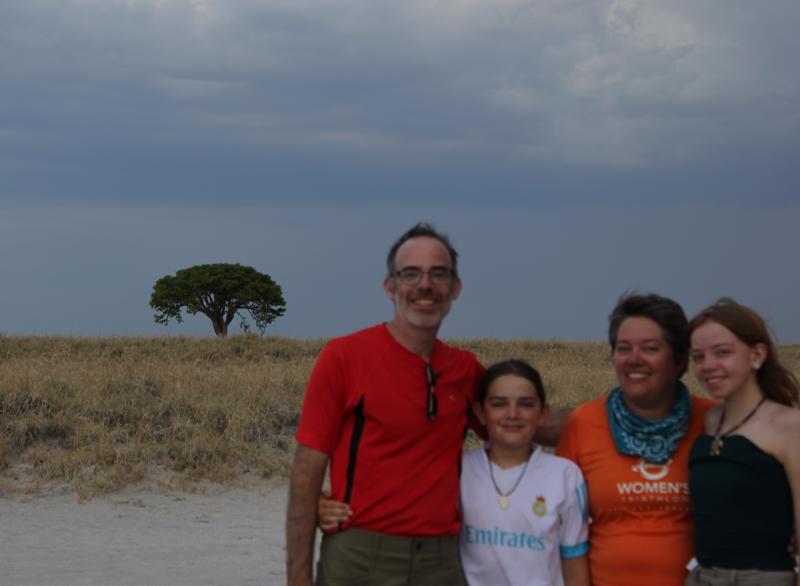

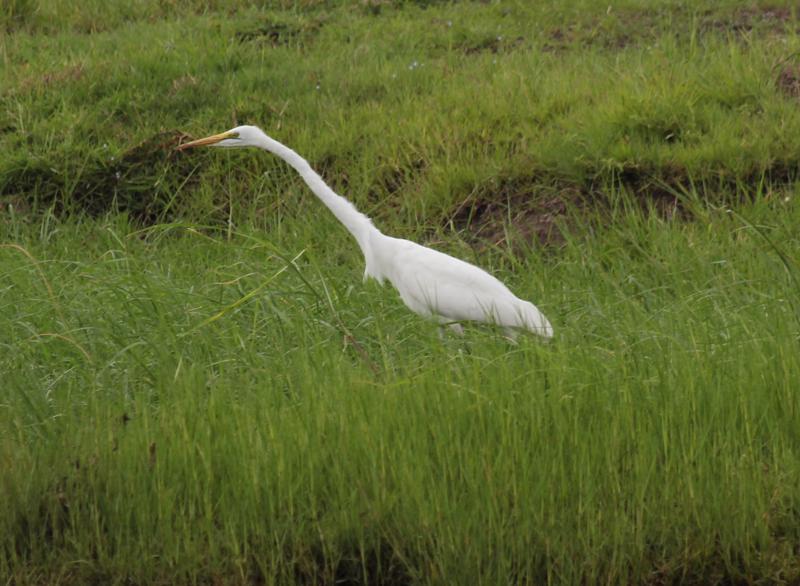
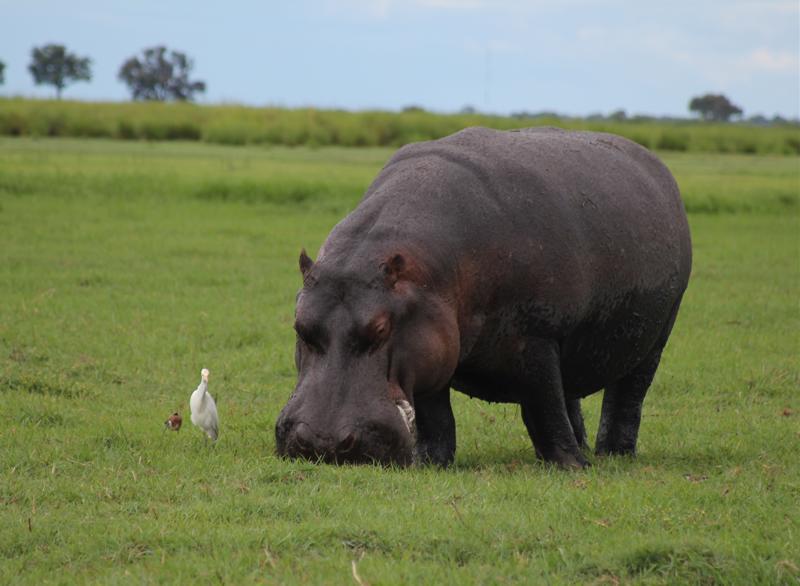
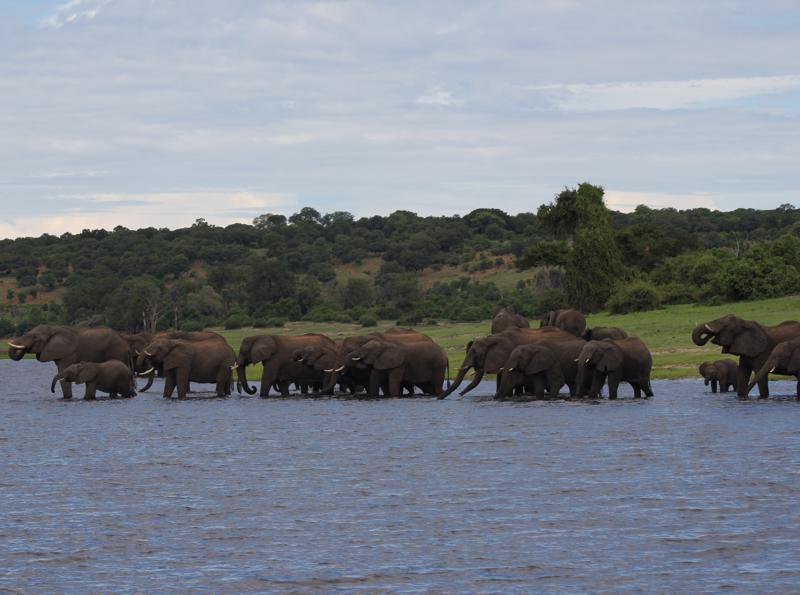
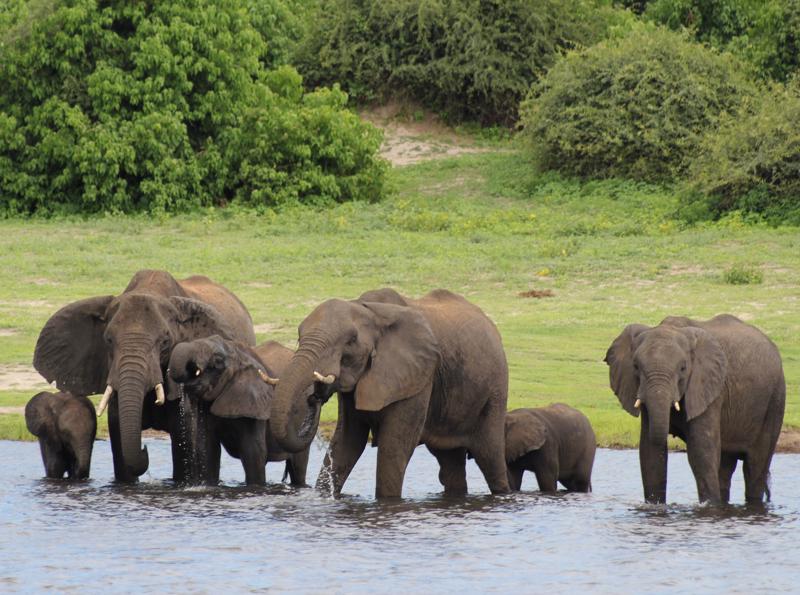
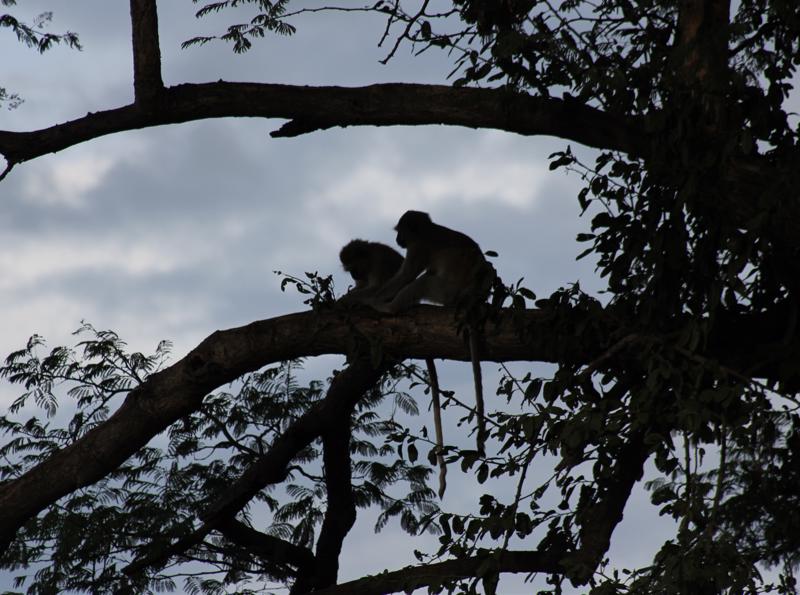
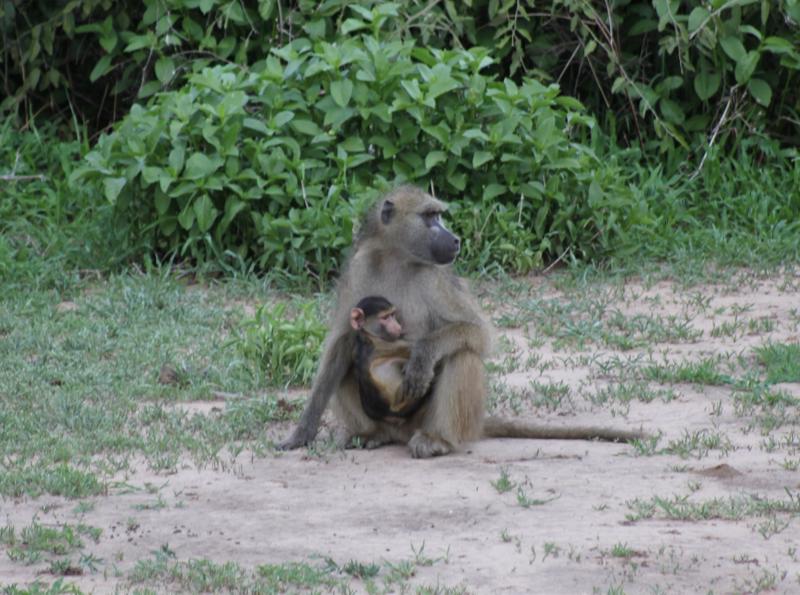
season: apparently when they are going full bore the mist is so heavy you can’t actually see them. We went on the Zimbabwe-Zambia bridge (the Zim-Zam bridge) although we were careful to not go into Zambia because we did not get yellow fever shots; with a Zambia stamp South Africa might no longer allow us into their country. Our other objective in the town of Victoria Falls was to share wealth through selected souvenir purchases…the economy of Zimbabwe is incredibly depressed, with over 80% unemployment, and its citizens were definitely hurting and ready for a post-Mugabe government.
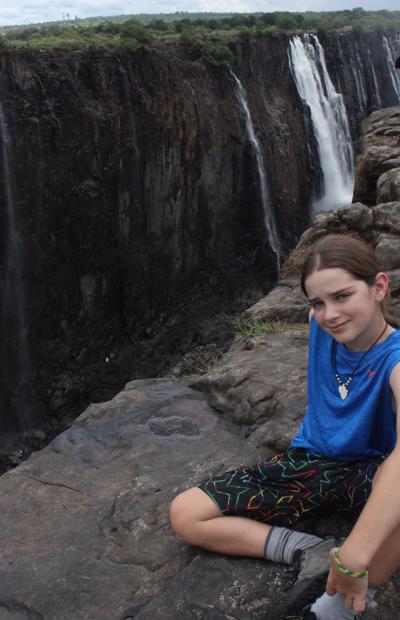
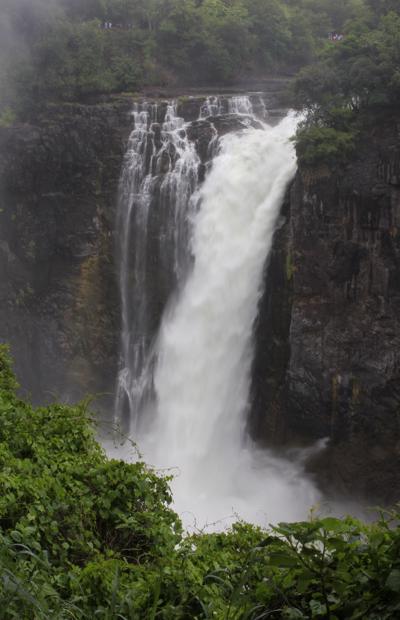
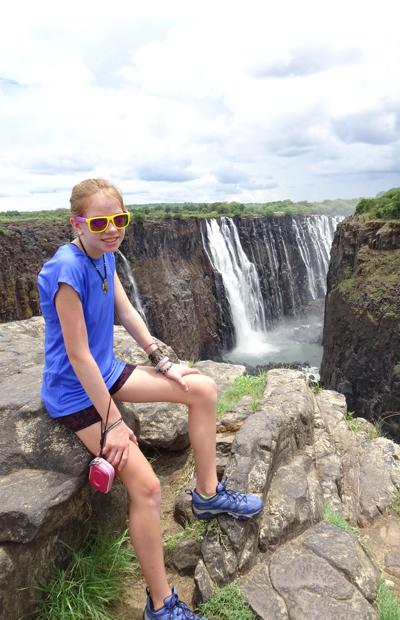
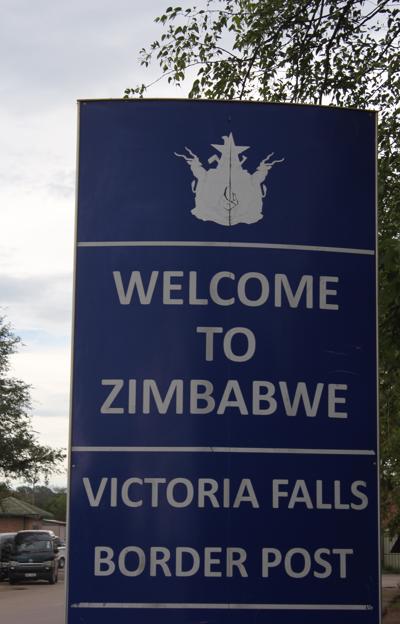
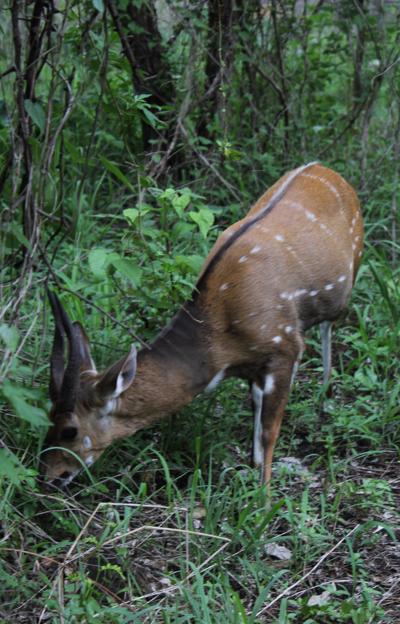
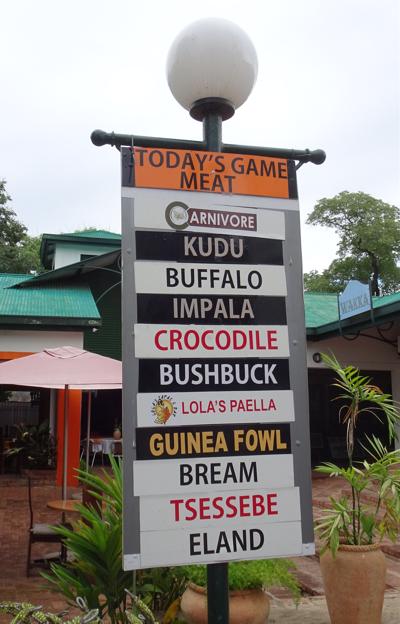
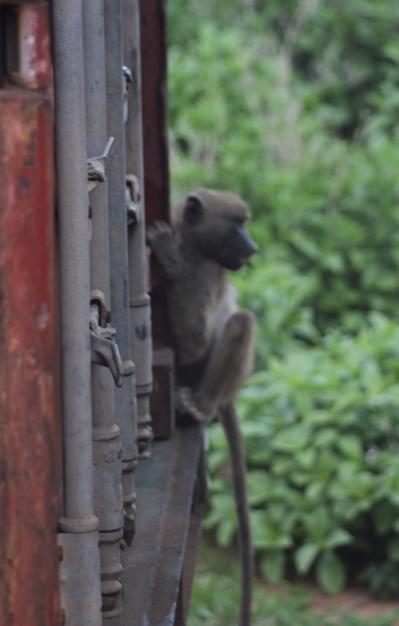
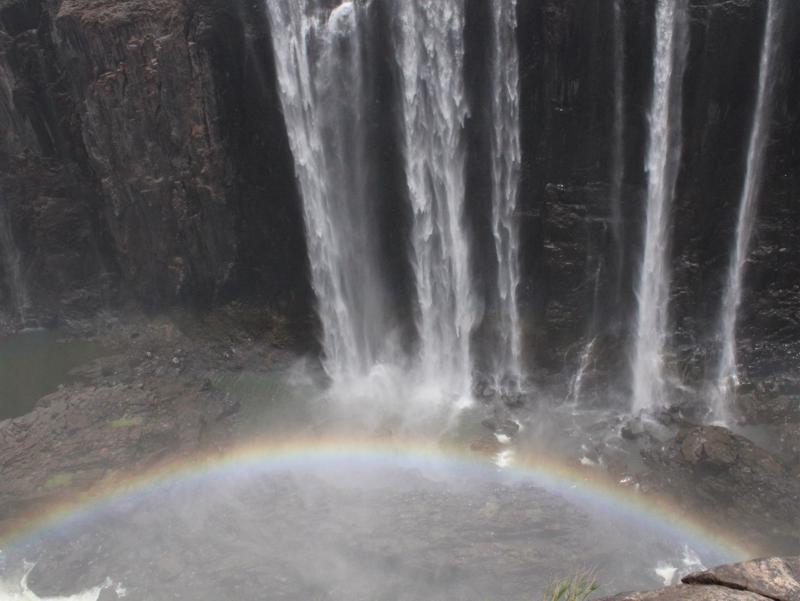
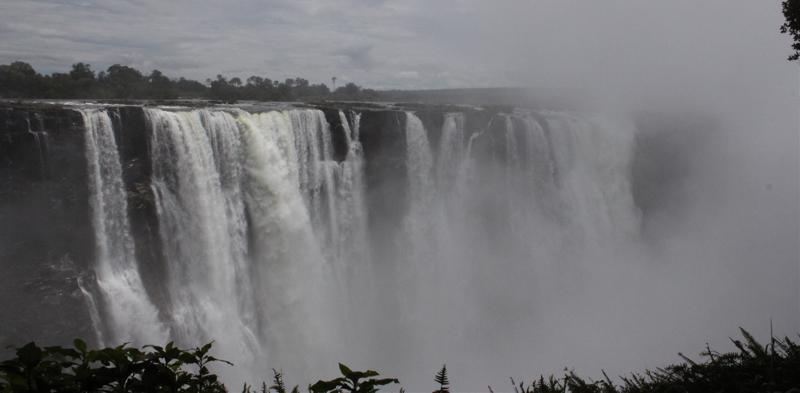
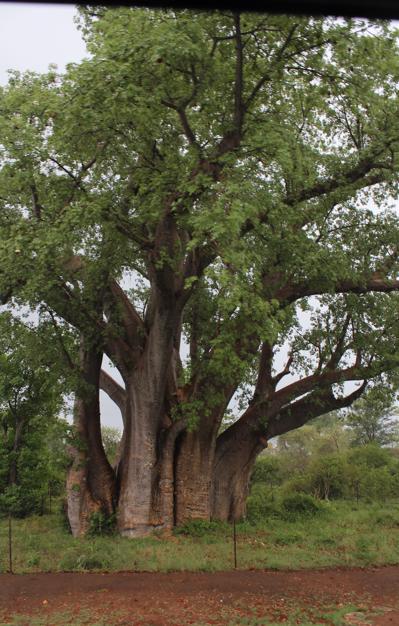
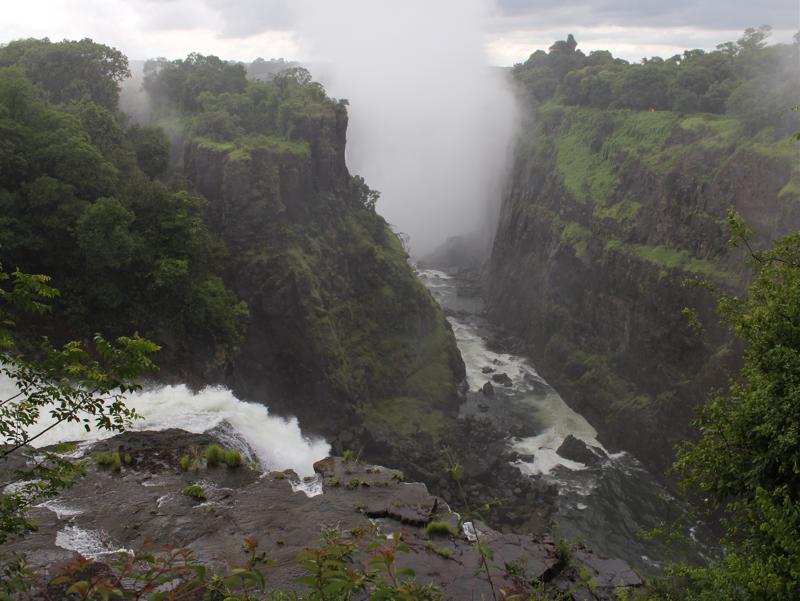
From Victoria Falls we headed out to Hwange National Park. While a team of lodge guys were assisting our guide, Tony, in getting the safari truck out of a huge sand pile, we got to go on a safari at dusk: we came across a huge herd of buffalo and elephants in the trees. Elephants are usually fairly docile animals except for the young teenage males, and that evening we came across one trying to show off a bit. He showed us some territory-defending behaviors and our safari guide made the choice to back up; this one example reminded us all these are very wild creatures. Somewhere one of our European colleagues has a video of a rather angry elephant marching towards our truck. Harley has seen enough elephants for a good long while.
We drove through the city of Bulawayo, Zimbabwe next, and we saw all the lines in front of the banks: people are allowed to withdraw only

$50/day from the banks, and sometimes there are cash shortages. The recent history of Zimbabwe is just heartbreaking; it is a beautiful country and at one time was the breadbasket for all of Africa. We continued our journey to Motopo National Park, where we were on a rhino walk with our extremely knowledgeable guide, Ian, who has starred on Animal Planet for rhinos. We heard about the illicit trade in rhino horns. Motopo chooses to remove the horn from its rhinos to make them less attractive for the slaughter by poachers. We tracked a rhino from a hill within the Park, and Ian led us to where the 2-ton animal was getting a belly rub from a tree. The rhino knew his sounds and smell so well that he allowed all of us to take a knee merely 4 meters away from him. Four meters. Two ton animal. A few moments where my heart was in my throat, but I never felt unsafe.

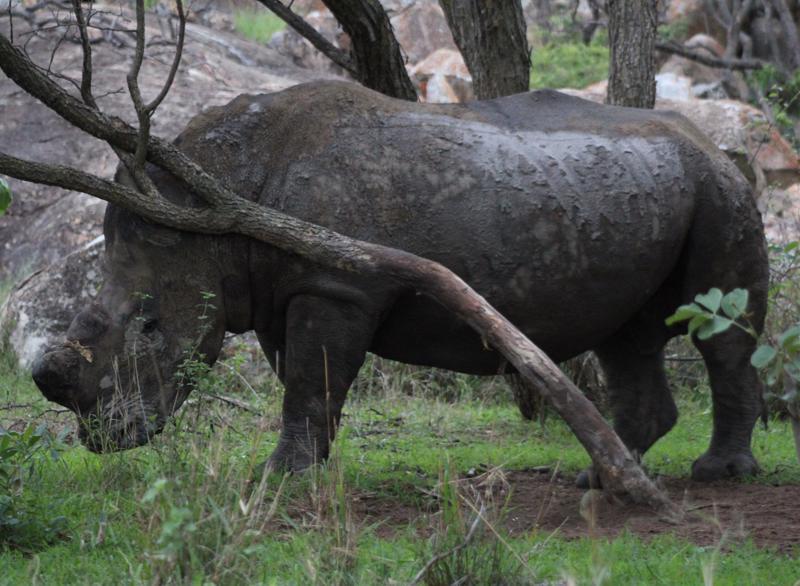

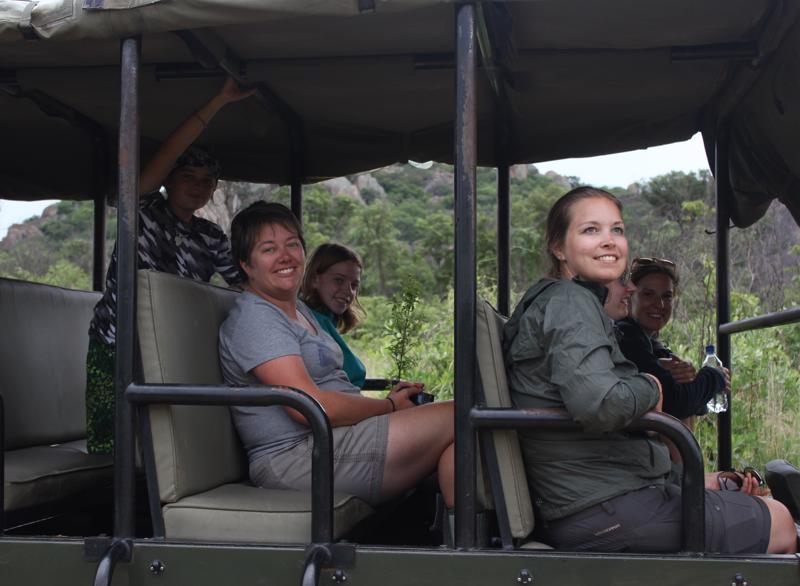
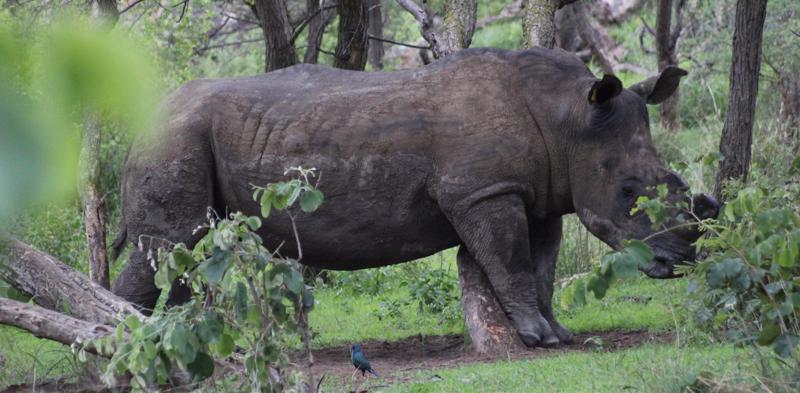
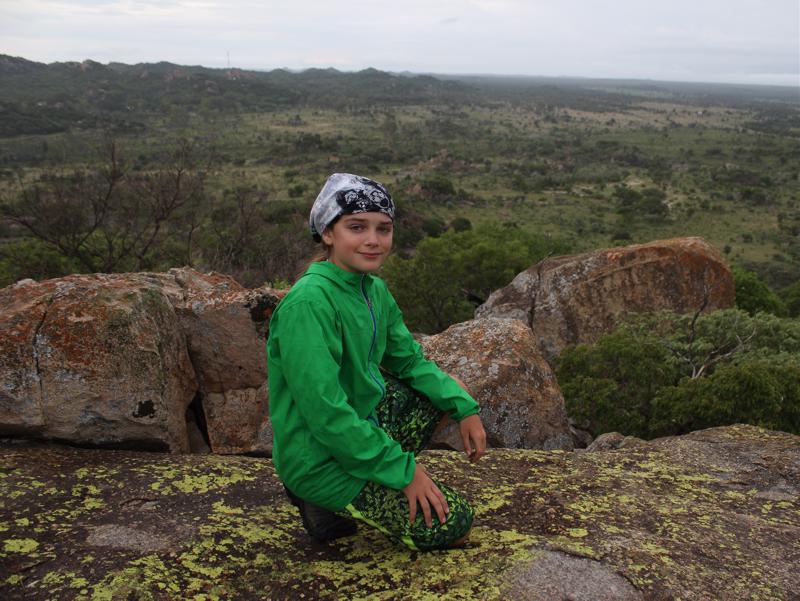
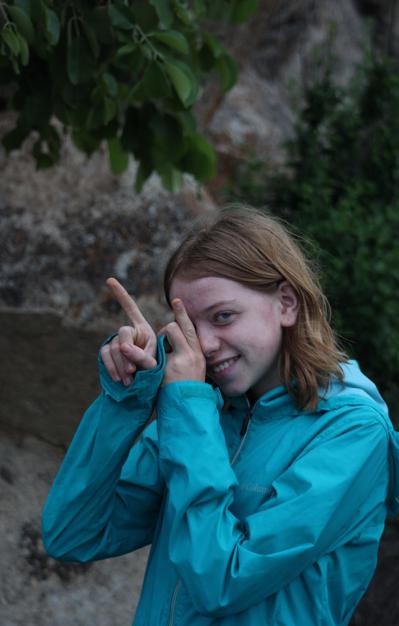
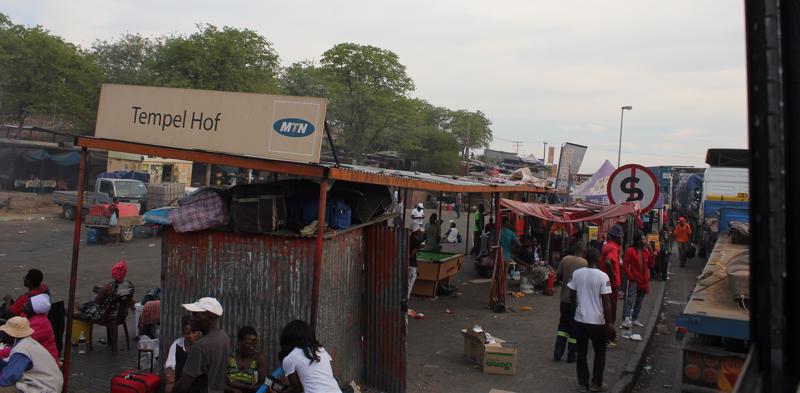
We celebrated Scott’s birthday a little early with ice cream and cookies outside Motopo, and the next day (December 24th) we began our trek towards Johannesburg, South Africa, the end of the tour. Our big task for Christmas Eve Day was to cross the border into South Africa from Zimbabwe: the population of Zimbabwe has moved outside its borders in an effort to find jobs, and everyone was ready to go home for the holidays. The border was packed, and even though the bulk of the traffic was headed the way opposite of our truck, the sheer lack of lanes for vehicles to travel in was having an impact. We exited Zimbabwe at 1:45 PM and got out of traffic from the border of South Africa at 7:00 PM. Tony only managed to get us through in that record time by “buying a few people some Cokes” which is a fancy way to say some money changed hangs to get our truck through. Zimbabwe citizens heading home were carrying goods of all kinds that they were unable to get inside their country, and we
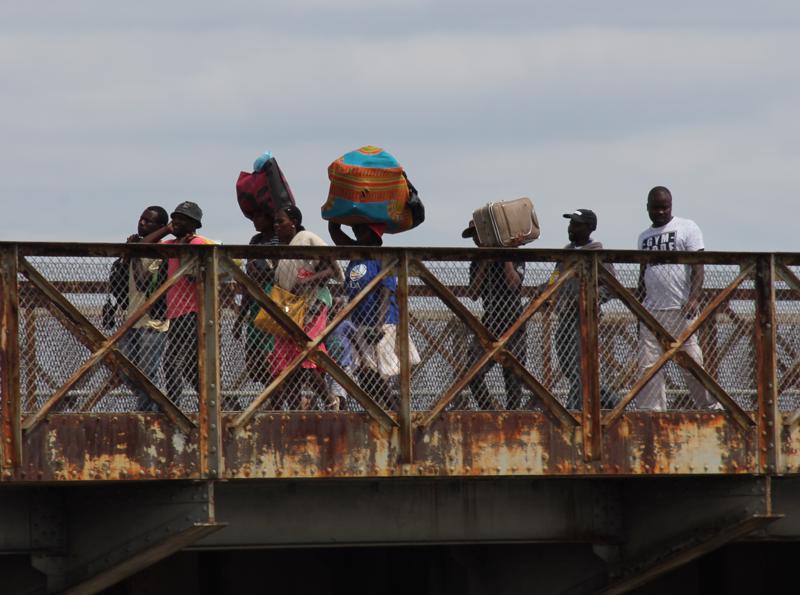
heard the time for some of the vehicles to get through would be up to two days. Makes every snowstorm I’ve ever needed to brave seem miniscule in comparison.
We spent our final night camping in the Limpopo district, and in the morning we went on a hike to see bushman art, from the San tribe, on some caves dating back to 1400 AD. Mostly it was depictions of animals nearby and which way the nearest water was.
From there, we drove into Johannesburg and parked at the Drifters Lodge. After some serious suitcase repacking, we headed to the airport, ready for the next chapter. I have to give Tony and really, all the guides we had, some serious credit: we enjoyed the trip immensely, nobody got sick, nobody got injured. I personally learned a lot about an area of the world I knew very little about.
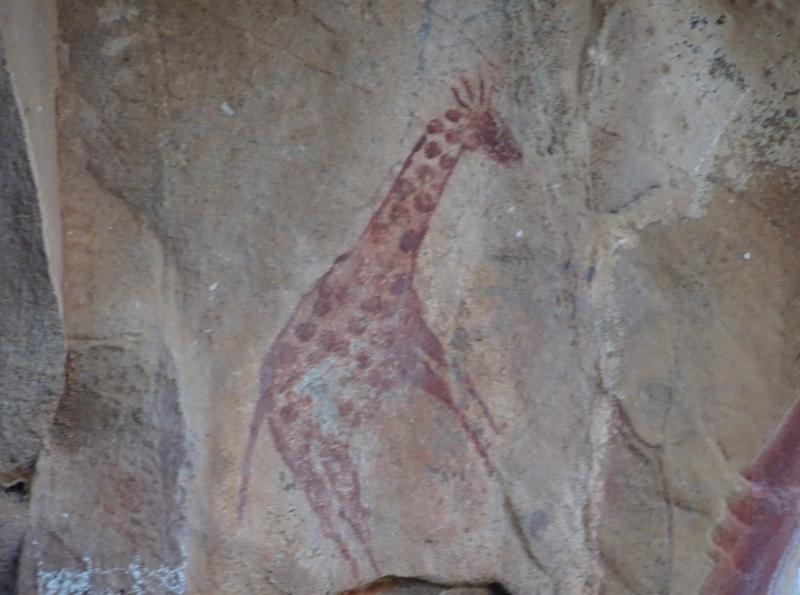
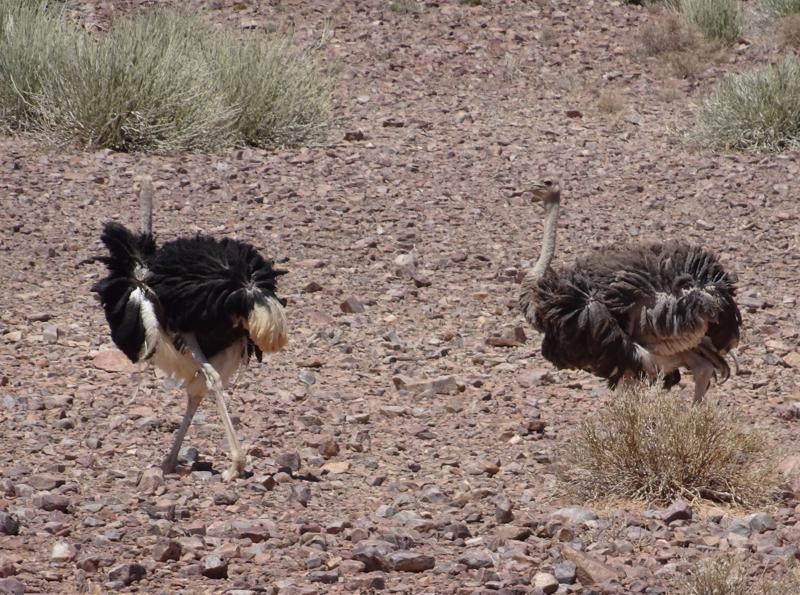
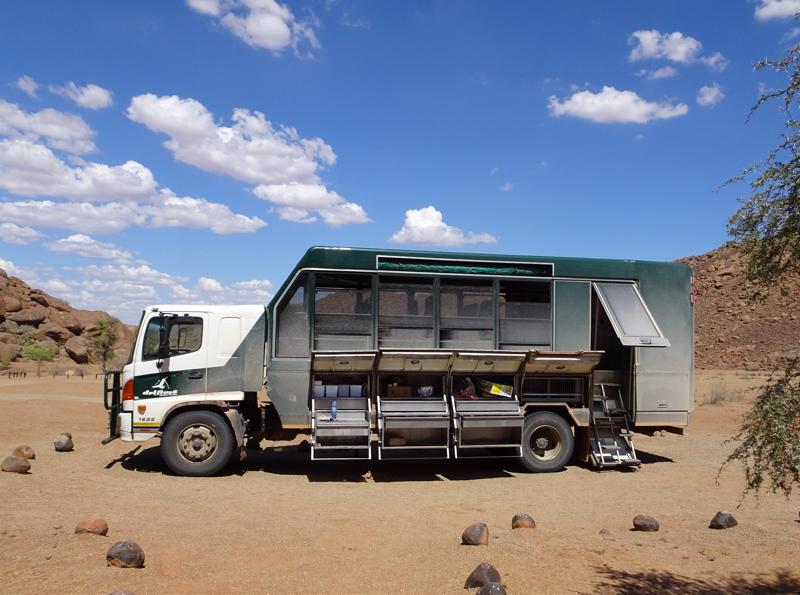
1.
Departure date
2.
Starting off in Iceland
3.
Checking in on the Queen
4.
A drive through Ireland
5.
Paris, Brussels, and Amsterdam
6.
A week in Germany
7.
Settling into Vienna, visiting Prague
8.
Week two-ish in Austria and Poland
9.
Bratislava and Halloween
10.
Budapest and Salzburg
11.
Art and history in Italy
12.
Even older history in Greece
13.
It's not a holiday, it's an adventure
14.
Thailand and Cambodia
15.
Australia
16.
In search of a Kiwi
17.
Fiji
18.
San Francisco, CA, USA
19.
Homecoming
Share your travel adventures like this!
Create your own travel blog in one step
Share with friends and family to follow your journey
Easy set up, no technical knowledge needed and unlimited storage!
© 2025 Travel Diaries. All rights reserved.